SOUTH KENSINGTON

After crossing Fulham road…
PELHAM, PELHAM, PELHAM
Pelham crescent
Pelham Crescent and Place and Pelham Street (formerly Pelham Road), were named after Henry Thomas Pelham, third Earl of Chichester, one of the trustees of the SMITH’S CHARITY ESTATE.
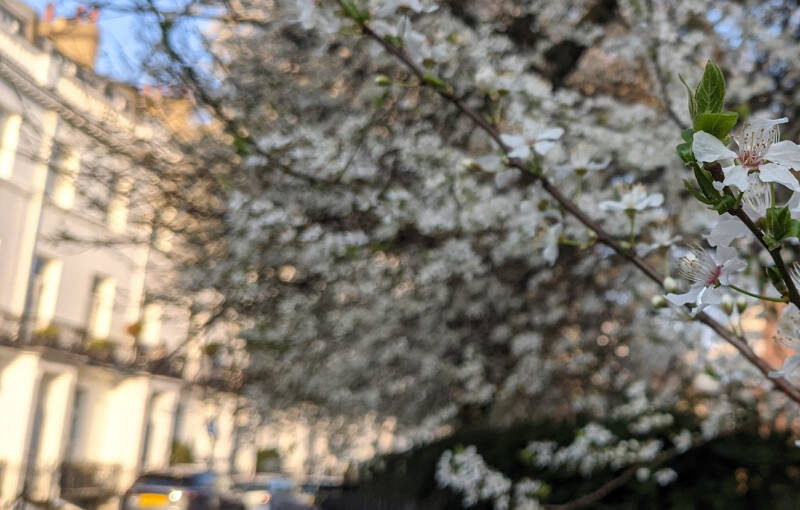
A circa 1825 Georgian crescent of houses designed by architect George Basevi.
The private communal gardens in the centre of Pelham Crescent are 0.4345 hectares (1.074 acres) in size. The selling of garden keys to the residents of Pelham Crescent funds the maintenance of the garden. The lessees of 1-27 Pelham Crescent and 1-29 and 2-18 Pelham Place had access to the gardens as a right of their leases until the leases expirations in 1932. The freehold of the garden is owned by the Smith's Charity Estate (now owned by the Wellcome Trust).
The average value of a house on the mews was £7.3 million in 2020.
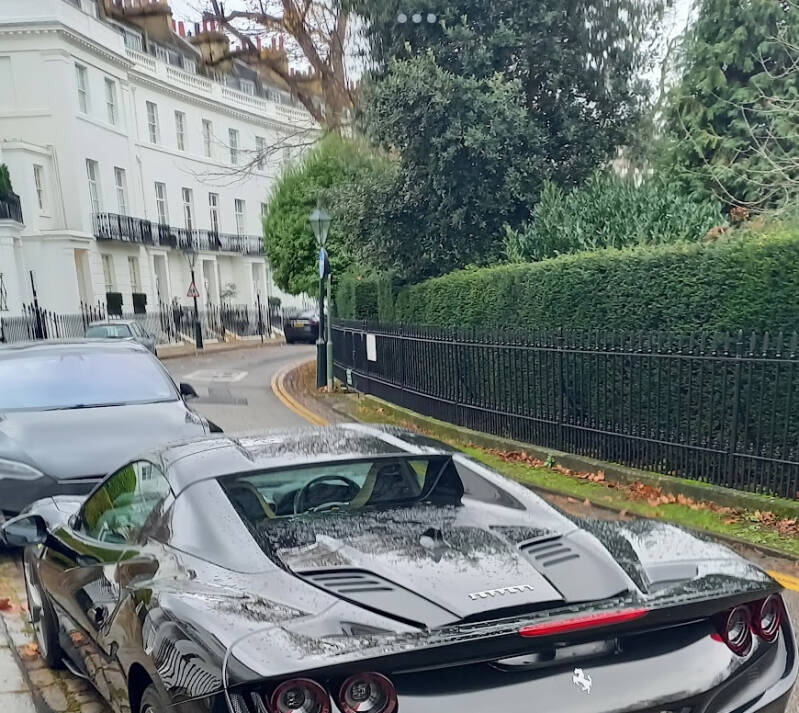
The Henry Smith Charity was founded in 1628 from the will of Henry Smith, a moneylender and landowner.
Henry Smith was born in Wandsworth in 1548. He was, as well, a City of London merchant and alderman. From 1620 he began to establish various charitable trusts, and when he died in 1628 he left £1000 for the ransom of English sailors captured by Barbary pirates. His monument is in All Saints Church, Wandsworth.
The charity owned the Smith's Charity estate here on farmland established in 1685. The Henry Smith Charity sold their South Kensington estate to the Wellcome Trust for £280 million in 1995.
Guizot returned to London at the beginning of March, 1848. He was now an exile. Taken in on his arrival by his close friend Mrs Sarah Austin, he first lived in Bryanston Square, MARYLEBONE, where he was reunited with his children, then moved to 21 Pelham Crescent, BROMPTON, which was then in the suburbs of London. His mother joined him there but died on March 31. She was buried at the Kensal Green cemetery, where her grave can still be found.
Sir nigel playfair


Sir Nigel Ross Playfair (1874 – 1934) was an English actor and director, known particularly as actor-manager of the Lyric Theatre, Hammersmith, in the 1920s.
Fortnum & Mason sells a rich, bitter marmalade, made for Sir Nigel since the 1920s and named in memory of him.
the thin house
This rather trim building on Thurloe Square came about due to the fact that, 20 years after the construction of the square, 23 of this houses were sold to the Metropolitan District Railway despite uproar from landowner H.B. ALEXANDER, in order to build an extension of the original Metropolitan Railway, whichhad opened in January 1863 between Paddington and Farringdon. Its steam trains ran underground connecting the railway termini at Paddington and King’s Cross, with several intermediate stations, and rapidly brought people to and from their place of work in the City of London.
Thurloe sq.
Many of the houses on the square were designed by London architect George Basevi, a student of neo-classical architect SIR JOHN SOANE. They were all fairly traditional, boasting beautiful columned porches at their entrances.

Before you continue, there is More to see Around SOUTH KENSINGTON LU STA
South kensington sta.: Metro & tube

The station is in two parts: SUB-SURFACE platforms opened in 1868 by the Metropolitan Railway and the District Railway as part of the companies' extension of the Inner Circle route eastwards from Gloucester Road to Westminster and DEEP-LEVEL platforms opened in 1906 by the Great Northern, Piccadilly and Brompton Railway.
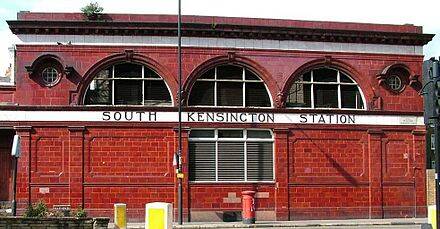

London’s first Polish restaurant and another favourite spot for SOVIET dead-letter drops. It was also a haunt for Christine Keeler, the call girl at the centre of the Profumo scandal of the early 1960s.
Bute st.
Eateries and shops


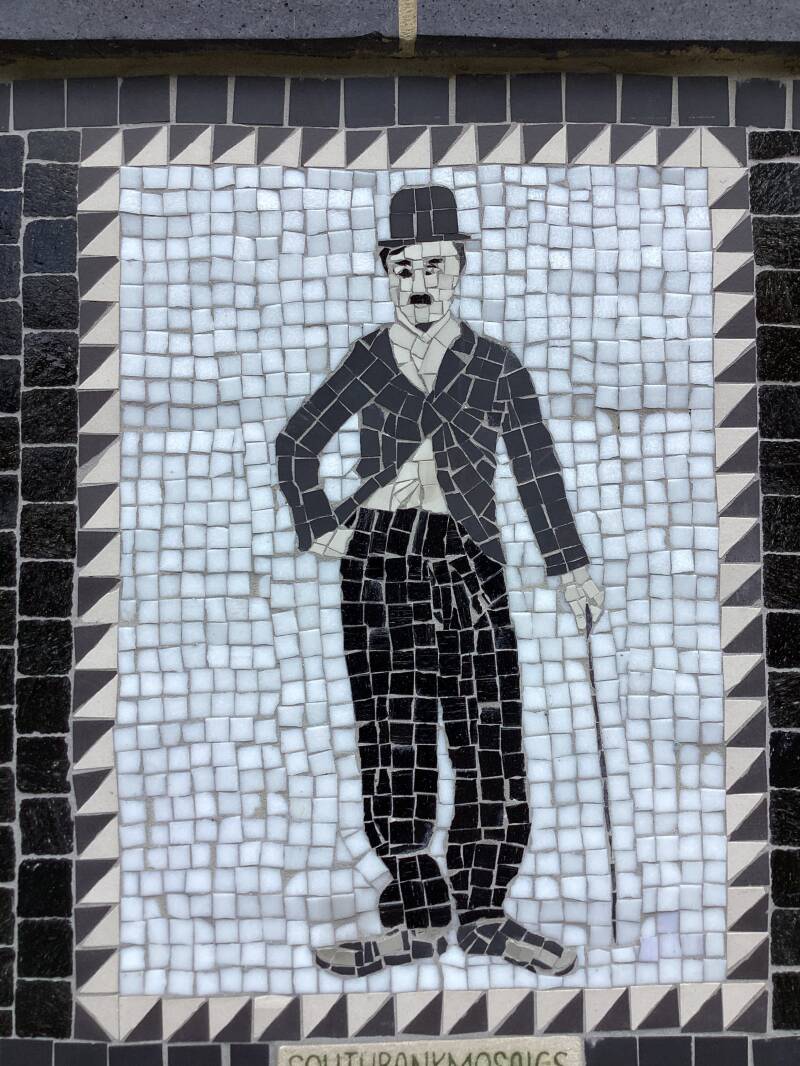
The zetland arms ph
On pubshistory.com, it is noted that "According to the pub sign, the 1880 landlord Sid Chaplin was the older half brother of Charlie Chaplin the film star", and the 1880 Post Office Directory confirms that a Sid Chaplin was landlord in 1880.
Not far way… LITTLE FRANCE
French Institute
Exhibitions, events, cafè, cinema…
Beautiful Art Nouveau, from 1938. The FI had been founded in 1910, as a cultural educational centre.
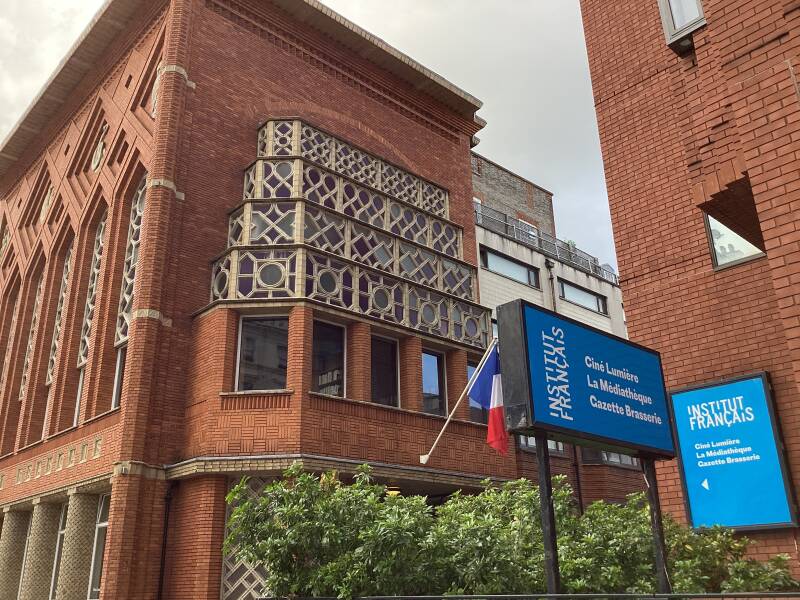

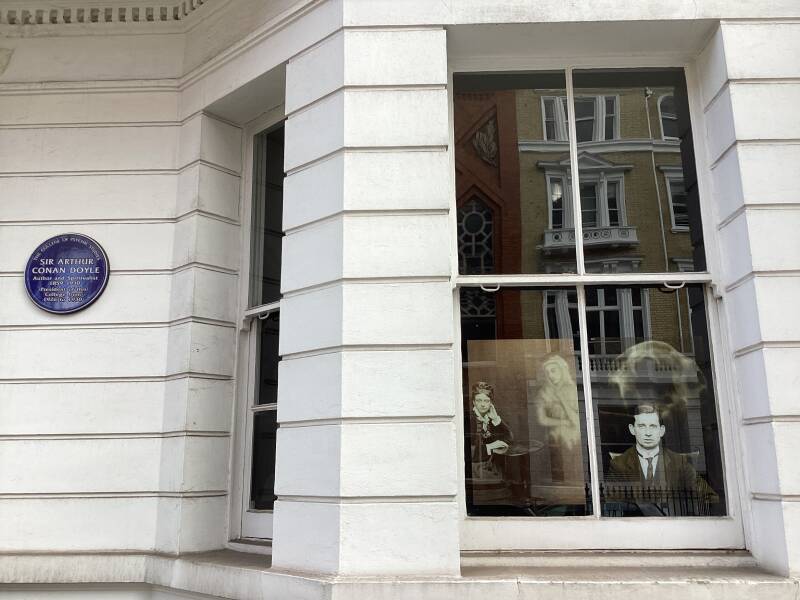
At the time of his death on July 7, 1930, Sir Arthur Conan Doyle had long been established as the world’s best-known and most outspoken proponent of Spiritualism, the belief that the dead are able to communicate with the living through an earthly conduit, or medium. For fourteen years he had devoted the better part of his time, energy and resources to this cause, which he often described as “the most important thing in the world.” He once declared that he would gladly sacrifice whatever literary reputation he enjoyed if it would bring about a greater acceptance of his psychic message, and to those who found comfort and meaning in his beliefs, he was “the Saint Paul of Spiritualism.”
More about ACD in the ROYAL ALBERT HALL chapter

Then, in case you want to continue exploring: GLOUCESTER ROAD & EARLS COURT are not far away




BUS ROUTES ALONGSIDE CROMWELL ROAD OLD BROMPTON ROAD and FULHAM ROAD
St.agustine church, queens gate
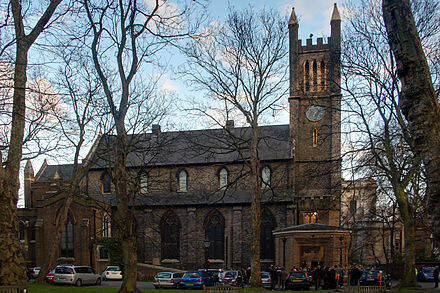
Orifginally, a HIGH CHURCH project, with HOLY TRINITY, BROMPTON. J A SHAW STEWART MP, leading member and founder (he cofounded, as well, KEBLE COLLEGE, OXFORD).
Architect: W BUTTERFIELD, disciple of PUGIN. He designed, as well, ALL SAINT’S, MARGARET ST., FITZROVIA.
A composition and material choice without regard to adjacent buildings (SURVEY OF LDN)
Small belfry tower, square shoulders, very high. Completed 1877. Orig. polych. decor restored, after complete whitewashing in the 1820s.
gloucester road
Shops and eateries. Lovely architecture.



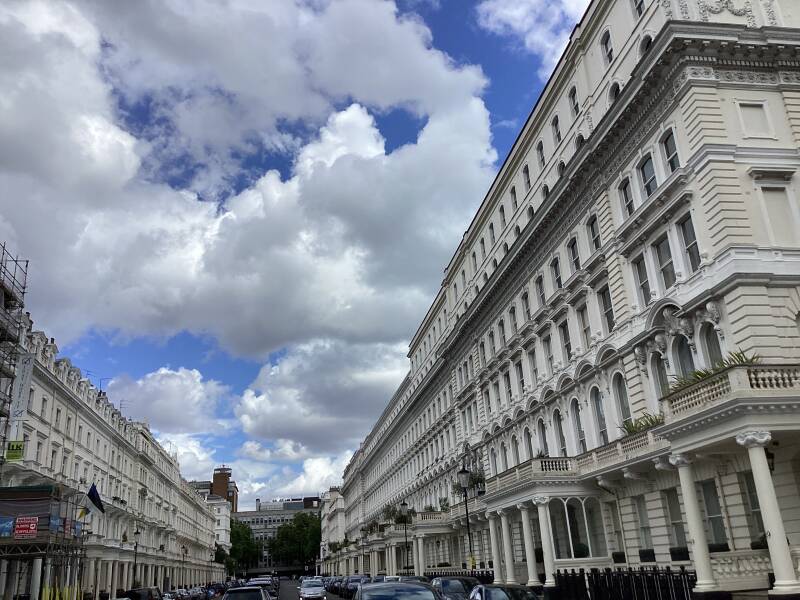
More about London’s “metro”
There are two types of line on the London Underground: services that run on the SUB-SURFACE network just below the surface using larger trains, and the DEEP-LEVEL tube lines, that are mostly self-contained and use smaller trains. In GLOUCESTER ROAD STATION you can see t’hem
Type of stationMETROpolitan Railway, the earliest UNDERGROUND
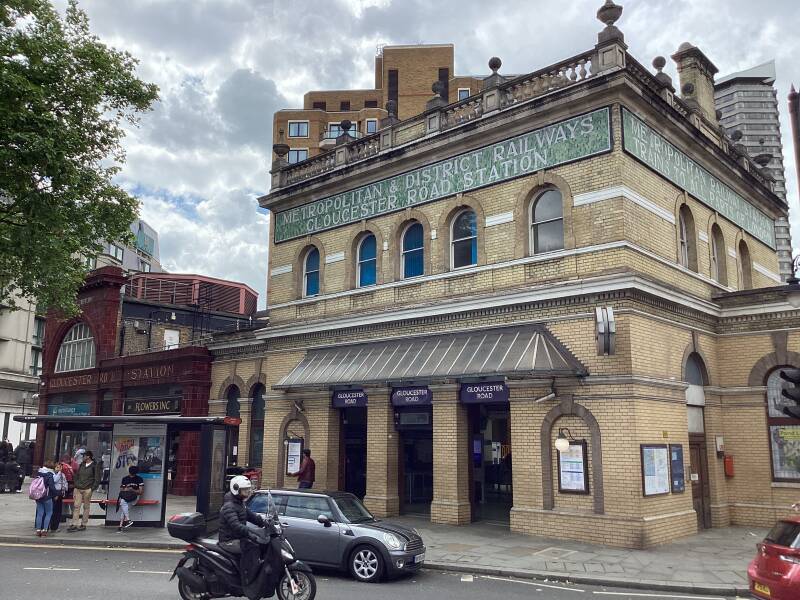
OXBLOOD tiles: the DEEP TUBE: the most distinctive style from this period was developed by Leslie Green in 1906/7. Green's signature featured oxblood coloured tiles, moulded detailing and spacious arches on the outside and green-tiled, florally designed ticket halls. This was used at over 40 stations on the original sections of the Piccadilly line.
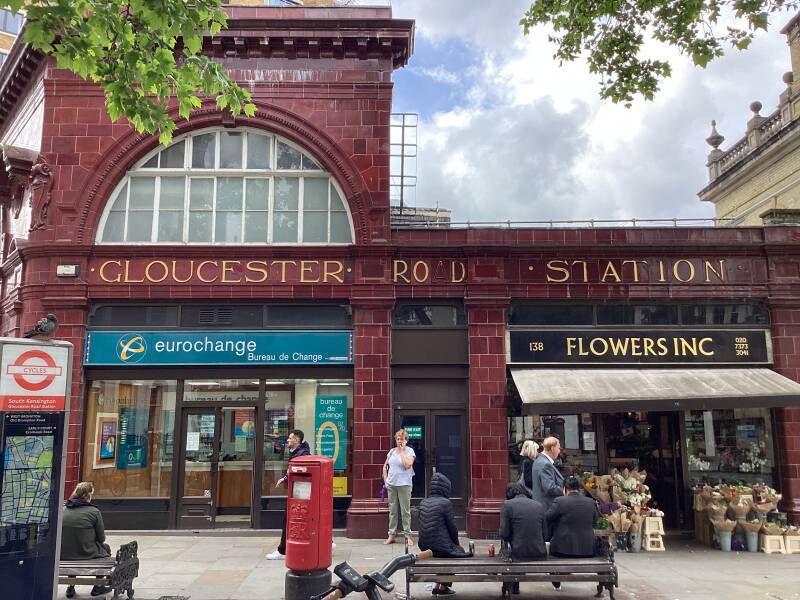
Towards earls court
Kinnance mews
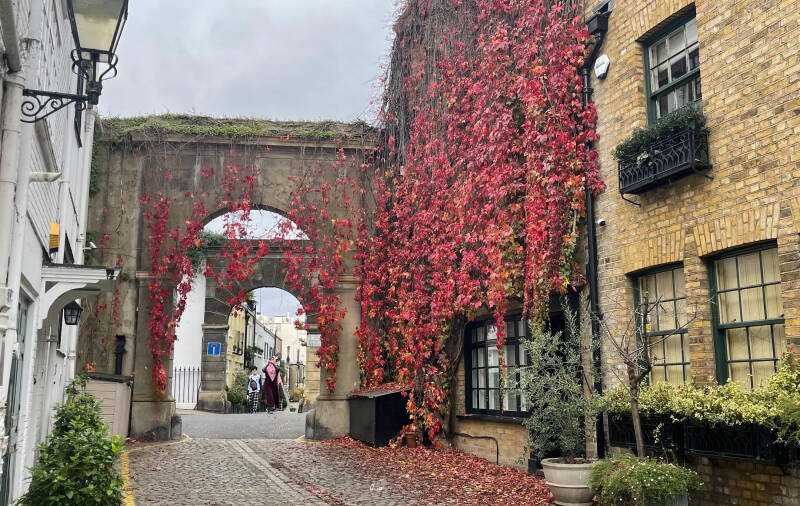
The devonshire arms

Edwardes square
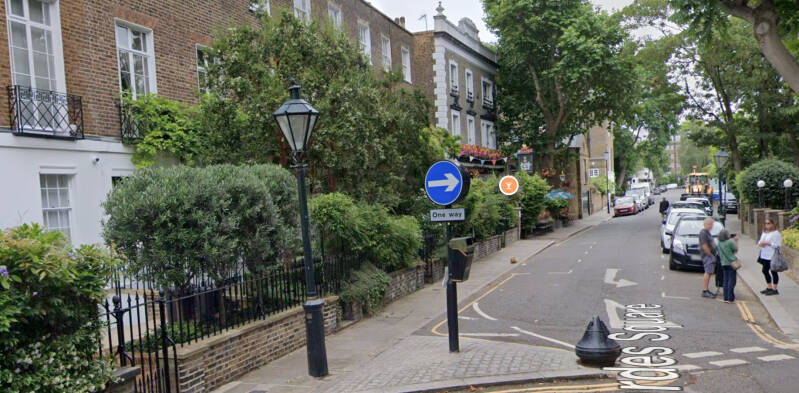
Alongside Cromwell road
A newly married Hitchcock, lived here
Designed by Sir Ernest George of the fashionable architectural practice of George and Peto, Harrington Gardens comprised but one speculative development within the huge tidal wave of bricks and mortar which swept over Kensington following the Great Exhibition of 1851, the building of the great museums complex around Exhibition Road and the creation, in 1865, of the Metropolitan District Line. Most of the new streets followed the classic, stuccoed, terraced pattern. Harrington Gardens was quite different.
COLLINGHAM GARDENS

Built between 1881 and 1888, the buildings on either side of the garden were designed by Ernest George and Peto, a firm that grafted Northern European urban motifs onto plainer Queen Anne style stock.[1
Gunter estate: From a west end tea-shop owner..
James Gunter (25 July 1731 – 19 September 1819)[1] was an English confectioner, market gardener and property developer who laid the foundations for what became one of the great residential estates in West London, developed by his descendants, the "Redcliffe Estate" and The Boltons in Little Chelsea and West Brompton.
Earls court
In EARLS COURT you will come across this historical piece of furniture. If you are really, really a fan VISIT EAST HAM!.
Pleanty of eateries and drinking places!
what about freddie mercury’s shrine?

and what about the paultons?
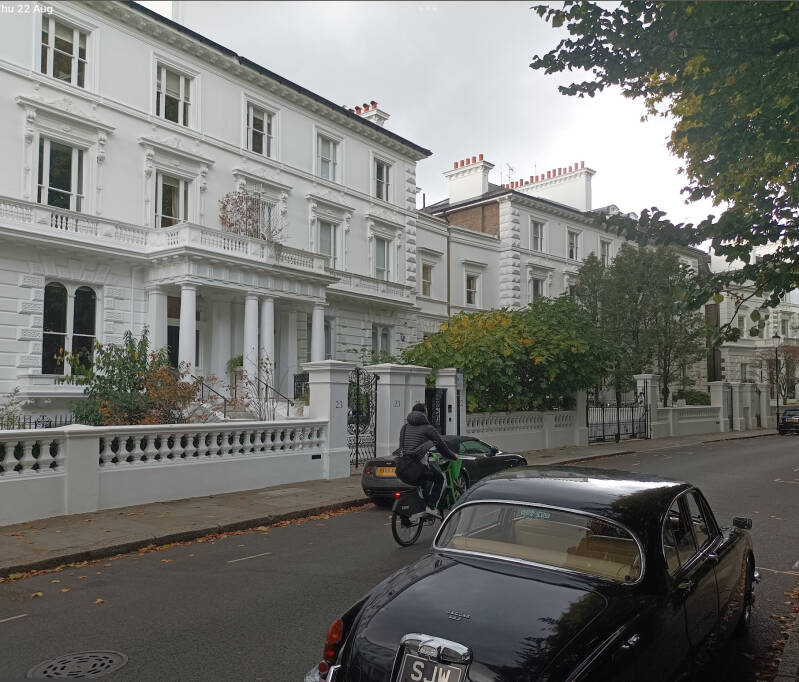

Back to your tour…


A modest man… who HAD AN IDEA, a big big idea… (by the way Who ran the country during the Middle VICTORIAN times, VICTORIA or ALBERT?)
An example of enlightened planning, very bold, an overpowering group of institutions…. very much criticised at the time (money wasted!, too much power in the hands of one man -HENRY COLE- !).
A new suburb, a new name…thanks to the financial profits from the GE1851 (almost £200.000]. Land was bought, and a cultural, educational area was established. Now, a world famous one. A place where art and science were to be promoted and taught in a way in which would be practical to industry, in order to make Britain the leading country of the industrialised world.
ALBERT, was the inspirator. COLE, the executor. 86 acres land were to be build-up!
And, around the knowledge institutions, a new fashionable residencial area began to spring up. Houses and mansions were built all over the place.
Only a few houses existed on this land, from KENSINGON GORE to THURLOE PL. before, and no roads. So COMMISSIONERS laid out a few main roads, called the district SK, and work began…
In 1856, the BROMPTON BOILERS (V&A MUSEUM site) was temporary, utilitarian, glass and iron building, designed by W.CUBITT, to house the 1851 exhibits, and various other art collections. Very basic, though. This was the first SKEN MUSEUM. The CRIMEA WAR had caused shortage of funds, and the initiative was deemed pathetic and caused contempt.
A 1862 EXHIBITION was proposed. FOWKE of the ROYAL ENGINEERS was given the task of designing a huge building (on the NH MUSEUM site). WAR broke up in Europe in 58, ALBERT died in 61. And the 1862 GE was a flop. QVICTORIA never visited. It was not a popular event and ended without profits.
Finally all took off:
71 RAH & HUXLEY BUILDING (originally the SCIENCE SCHOOLS)
75 NAT.SCH.OF MUSIC, later RC MUSIC (f. in the building occ.since 1903 by RC ORGANISTS)
80 NH MUS
83 RC MUSIC building
84 CITY & GUILDS COLLEGE, later IMPERIAL COLLEGE. Reb.1962.
93 IMPERIAL INSTITUTE. Only the QUEEN’S TOWER survived the 1957-62 rebuilding, to assist expansion of IMPERIAL COLLEGE
1909 V&A MUS.
13 RSCH.MINES
28 SCIENCE MUS.
35 GEOLOGICAL MUS.
64 RC ART
Victoria &Albert, Britain’s national museum of art and design
A product of the GE1851: In 1852 the exhibits of the MUS.OF MANUFACTURES, in MARLBOROUGH HOUSE, were contemporary works produced for the GE, plus a motley collection of plaster casts. Applied art and design intended to serve as inspiration for workers, craftsmen and students, helping rekindle Britain’s industrial dominance. HENRY COLE was the director.
Ancient and medieval exotica poured in from other international exhibitions and from the far corners of the Empire and beyond.
The collection was moved to BROMPTON, were it was known as the SOUTH KENSINGTON MUS. The buildings were nicknamed the BROMPTON BOILERS.
The cast-iron and glass sheds (CUBITT’s design) soon needed a replacement. In 1899 it was named after the founder and the Queen, who laid the found.sto. of the present building. Her last public engagement.
IMPOSING MAIN ENTRANCE. The idiosyncratic building, finished in 1909, was fronted by ASTON WEBB, in brick, terracotta and stone, surmounted by a pierced central tower, crowned by FAME. Octogonal cupola, flying buttresses, pinnacles.
Thw new building also received items of all periods from the gvnmt SCHOOL OF DESIGN (SOMMERSET HOUSE). Gifts and bequests and purchases have progressively enlarged the collection: 4 million obj. 7 miles of galleries= the greatest mus of applied arts in the world. Fine and applied art of all countries, all styles, all times. ASIAN ART, DRESS COLLECTION, DESIGN, CONSTABLES, RAPHAEL masterpieces, miniatures, watercolours, medieval & Renaissance sculpture.
The HENRY COLE WING (op. 1871), orig. HUXLEY BUILDING (design. by GEN. HENRY SCOTT) used as lecture halls for a variety of scientific educational institutions. Since 1983, collection of Prints, Drawings and Paintings
The NATIONAL ART LIBRARY (300.000 ref.publ.) is housed in the V&A, which also administers the WELLINGTON MUSEUM (APSLEY HOUSE}>>> and the YOUNG V&A (in BETHNAL GREEN)
The john madejski garden

See the original front door of the first building. In the PEDIMENT MOSAIC, Queen Victoria greets the bearers of inventions. Behind, the Crystal Palace, and names of countries exhibiting in GE.
Memorials to HC’S DOGS
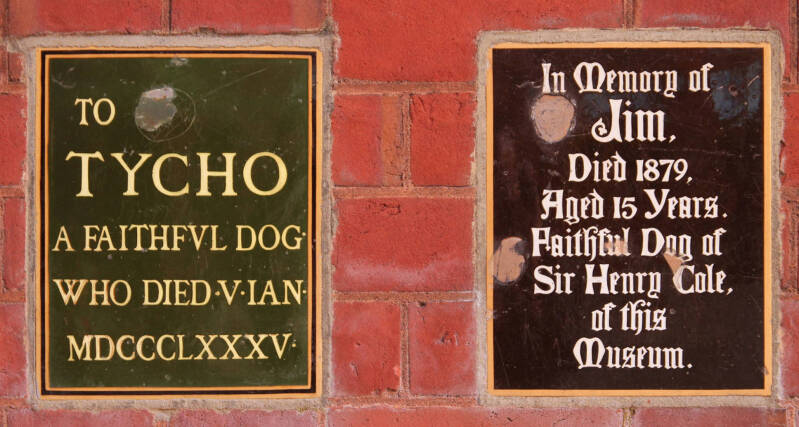
Convicts work

South of the GARDEN, through the SHOP, then MOSAIC FLOORS, made by women convicts in WOKING PRISON. F.MOODY did the drawings. It was part of the V&A vision of social responsibility: the exposture to arts and crafts, leading to social improvements.
Trajan column. ROOM 46
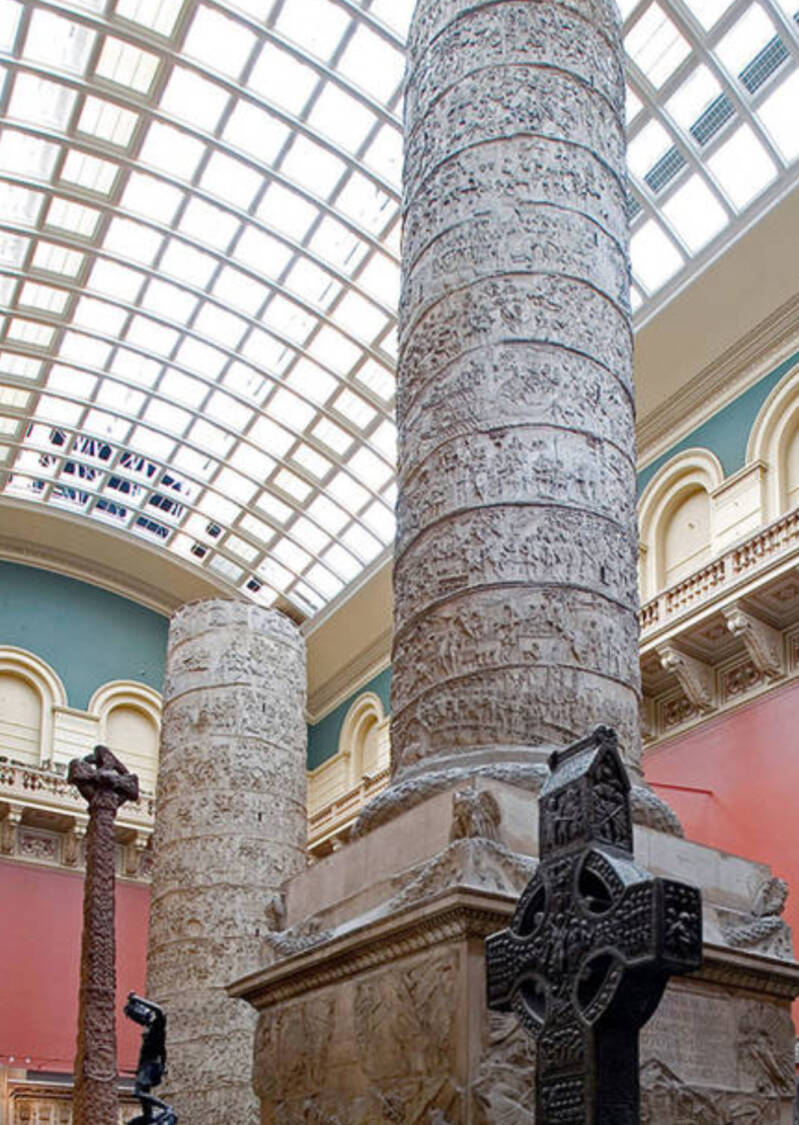
A plaster copy in two parts. A door?: space for storage, haircuts for staff?
Medieval/rennaissance

A daylit gallery… A TOWNHOUSE of a nobleman (MORLAIX, BRITTANY). Spiral staircase combined with long landings to rooms. The offset newel post is a single piece of decorated oak with patterns and figures that declare the owner’s polit/relig allegiance.
Paxton’s napkin
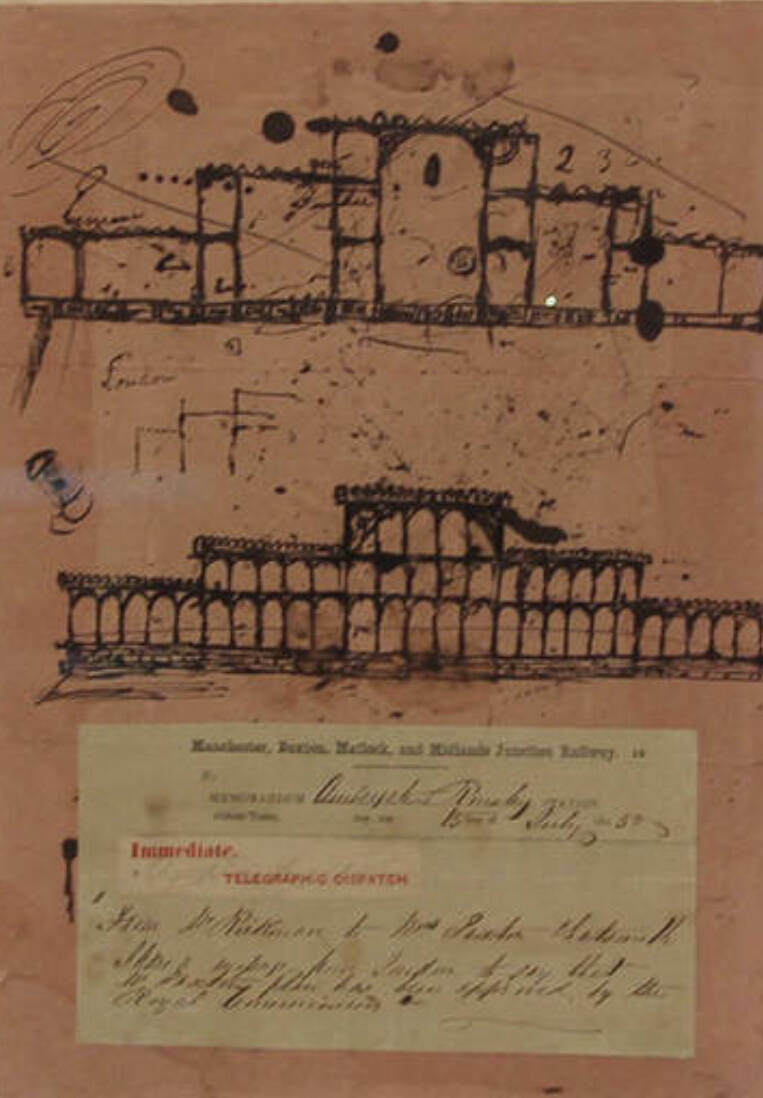
The original sketch of the GE1851, A moment of inspiration, intuition. Drawn in blotchy ink onto a telegraph sheet, this is an archetypal 'napkin sketch', capturing the moment of intuition and inspiration. We see the repeating arched bays and grand vaults of the building, which would be completed the following year, becoming one of the most iconic buildings of the industrial era.
BRITISH GALLERIES
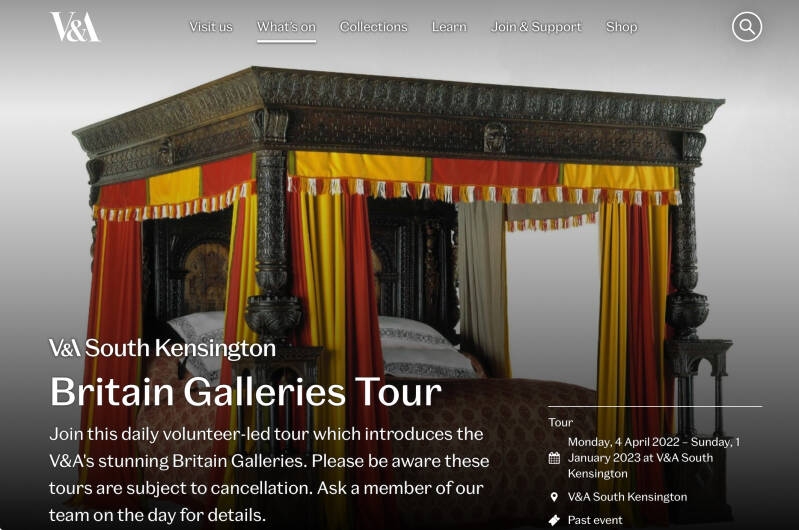
From a famous TUDOR BED to MORRIS and MCINTOSH.
Sgraffito wall
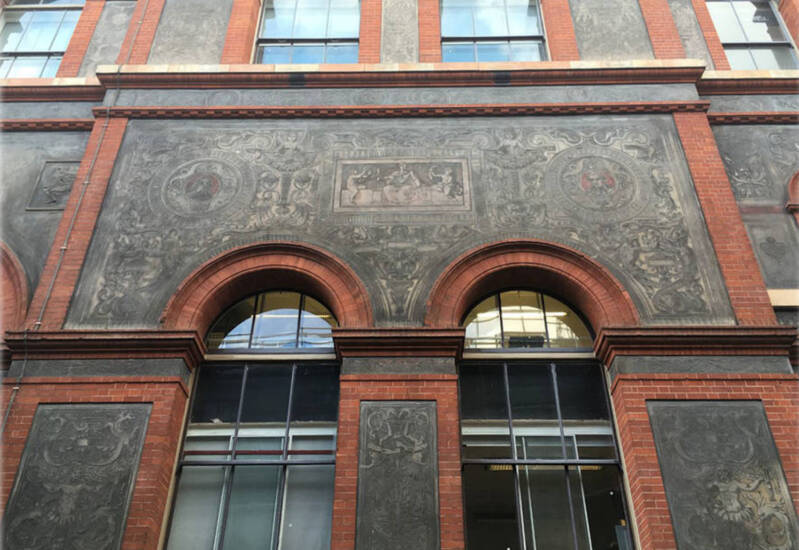
SACKLER COURTYARD. New white porcelain. You SEE now the orig. 1873 building
A Renaissance technique, scratching a design into layers of plaster. This was the site of the boilers, before being revealed to the public. A project of Amanda Levete Architects has allowed as well a new underground space to be created digging down 40 m. into the earth and opening a new connection with EXHIBITION ROAD
Bomb damaged walls
The dents and chips are remnants of the German military bombing campaigns of World War II. For 11 months, London and many other parts of England were besieged by an aerial bombardment commonly known as the Blitz.
Despite being under constant bombardment, the museum mostly remained open during the air raids.
Ceramic staircase
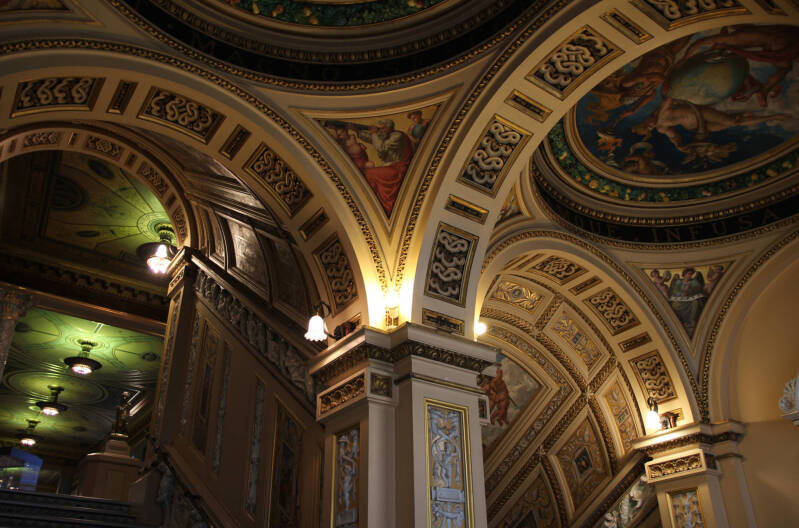
in the central nave of the Cast Courts is a wonderful mosaic floor. Known as 'opus criminale', or 'criminal work', the floors were made by female convicts at Woking Female Prison. Design drawings by Frank Moody, one of the V&A's in-house designers, were sent to the prison where the prisoners were to assemble the mosaic. This formed part of the museum's founding vision of social responsibility: that exposure to art and the craft of making could lead to social improvement.
Gambler, poynter & morris… what a magnificent restaurant!
Robin hood gardens

ENJOY a few more V&A MUSEUM trails
Now, a few

Collections In EAST LONDON
The new VICTORIA & ALBERT in the QUEEN ELIZABETH II-THE OLYMPIC PARK
The Young v&a. Bethnal green
Keep enjoying the feast End: BETHNAL GREEN ROAD and ROMAN ROAD markets
SIR HENRY COLE, the man who created MUSEUMLAND



One of the most forceful and energetic members of the GE1851 committee, became a leading campaigner for the creation of a museum to continue the GE educational and cultural work… And, as well, the RAH was very much his idea… And the RCOLMUS evolved from the music training school he helped to found… And, as FELIX SUMMERGY, wrote illustrated children’s books…And he was a postal reformer, helping ROWLAND HILL to sep up the PENNY POST, which encouraged the sending of…seasonal greetings…
The first collection of cards was exhibited in the museum in 1843.

Again on tour
Yalta memorial garden and TWELVE RESPONSES TO TRAGEDY (to Victims of the COLD WAR)

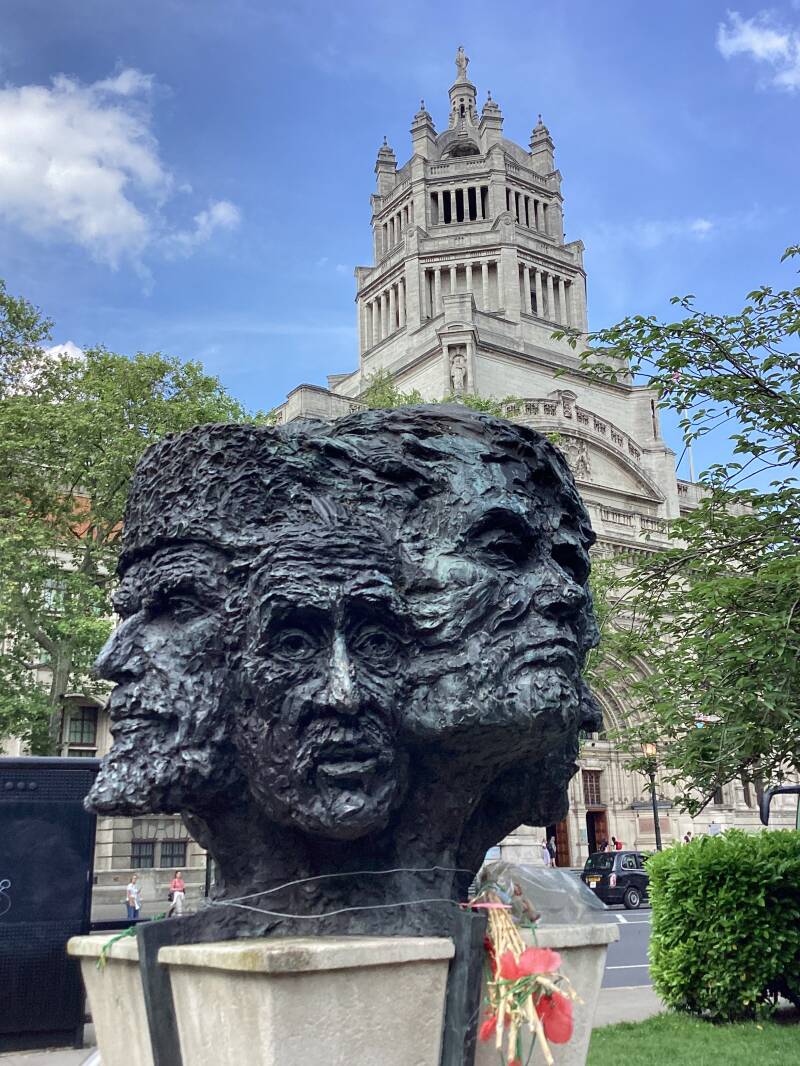

The memorial commemorates people displaced as a result of the Yalta Conference at the conclusion of the Second World War. Created by the British sculptor Angela Conner, the work consists of twelve bronze busts atop a stone base. The memorial was dedicated in 1986 to replace a previous memorial (also by Conner) from 1982 that had been repeatedly damaged by vandalism.
The impetus for the memorial can be traced to letters in the 1970s to The Spectatorand The Times calling for something to remember those who were “forcibly repatriated by the Allies to the Soviet and Yugoslav authorities at the end of the Second World War, a crime that was carefully hushed up at the time and even concealed from Parliament for fear of the outcry that would have resulted”
The location was however to be a problem, as the small park is owned by the Crown Estate, and the Foreign Office had concerns about placing a memorial on government land that explicitly criticized former UK government policy.
It was eventually approved in May 1980 by Margaret Thatcher, and dedicated in March 1982.
The ISMAILI CENTRE. An ISLAMic temple & a CULTURAL CENTRE
A distinctively modern building, faced with grey-blue marble, adorned with slim windows, designed by the CASSON-CONDER.
The designer of the building, HUGH CASSON was the director of architecture for the 1951 Festival of Britain. From 1976 to 1984, he was president of the Royal Academy.
Inaugurated on 24 April 1985 by then Prime Minister Margaret Thatcher, in the presence of His Highness the Aga Khan, the 49th Imam (spiritual leader) of the Ismaili Muslims. It was the first religious, cultural and social space specifically designed for the Ismaili community in the Western world.

A branch or sect of Shia Islam. The Isma'ili get their name from their acceptance of Imam Isma'il ibn Jafar as the appointed spiritual successor (imām) to Ja'far al-Sadiq, wherein they differ from the Twelver Shia, who accept Musa al-Kadhim, the younger brother of Isma'il, as the true Imām.
Are Nizari Ismaili Muslims considered Muslims by Sunni Muslims?
Who cares if Sunnis consider Nizari Ismaili as Muslims. Aga Khan is the only Muslim leader who is considered to be a bridge between East and West, highly regarded by political leaders of various countries as a global humanitarian. The Aga Khan has promoted Islam and its values in promoting Islamic culture by establishing the only Museum of Islam arts etc in Toronto as the Aga Khan Museum.

As well, nearby
the oratory of st.philip neri, or the BROMPTON oratory. But,Officially, the church of the immaculate heart of mary.
London’s most flamboyant Catholic Church. The architect was young and unknown HERBERT GRIBBLE. Italian Baroque. Portland stone. 1881. An Italian style church for “those who had no opportunity of going over to Italy…”.
Surmounting the exceptionally wide and lofty nave, an1896 dome and lantern by GEORGE SHERRINGTON.
Statues of 12 apostles by G.MAZZUOLI, 18th c., from SIENA cathedral
Baroque pulpit and mosaics by Commendatore FORMICCI.
Inlaid wooden floor and carved choir stairs inlaid with ivory (sanctuary), from previous church.
ST.WILFRID CHAPEL: Reproduction of REX WHISTLER tryptich.
ALTAR: early 18th c. Flemish Baroque.
As one journalist put it, the church conducts "rigid, ritualised, smells and bells Catholicism with a sung mass in Latin every Sunday and some very high society weddings throughout the year.


“God has created me to do him some definite service. He has committed some work to me which he has not committed to another “. NEWMAN felt unable to find God’s work within the the Church of England.
A brilliant Anglican scholar and preacher, one of the leading lights in the OXFORD MOVEMENT, a High Church attempt to forge a path between Catholicism and the voices of DISSENT and EVANGELICALISM.
By his 40s he was moving steadily towards a belief in Rome as the home of the true Church. In 1845 he was received into the RC CHURCH. The apostasy of such a prominent figure in VICTORIAN ANGLICANISM caused great controversy.
Ordained in 1846: he devoted himself to create a Catholic University in Ireland and to the established of the ORATORY OF ST.PHILIP NERI in BIRMINGHAM, serving as its rector in the 1850s. Pope Leo XIII appointed him cardinal in 1879. His spiritual journey is accounted for in APOLOGIA PRO VITA SUA was a response to fierce criticism from CHARLES KINGSLEY.
Unbelievable… but true.
Hundreds of SOVIET SPIES were believed to have been active in London at the height of the Cold War — and the Brompton Oratory, a magnificent Italian baroque Catholic Church in Knightsbridge, proved an ideal place for “dead-letter” drops of microfilms and documents.
Situated close to the Russian Embassy on Kensington Palace Gardens, it was easy for agents to slink away from the church among the narrow lanes branching off Brompton Road, or amid the many exits and staircases of the nearby Harrods department store.
If you know where to look, you'll find that London is full of secret corners and shady clubs once frequented by spies...
Holy trinity, brompton

Holy Trinity Brompton with St Paul's, Onslow Square and St Augustine's, South Kensington, often referred to simply as HTB, is an Anglican church in London, England.
Prior to the construction of Holy Trinity Brompton, the present site was a part of the large Parish of Kensington which was served only by the nearby St Mary Abbots church. In the early 1820s the area was in the midst of a substantial population increase, so a decision was taken to purchase the land and construct a new church.
The church was a Commissioners' church, receiving a grant from the Church Building Commission towards its cost. The full cost of the church was £10,407 (equivalent to £1,140,000 in 2023),[5]towards which the Commission paid £7,407. The architect was Thomas Leverton Donaldson.[6] Holy Trinity is a Grade II listed building
Welcome to brompton!. yes, you are in brompton, one of those vanished villages…
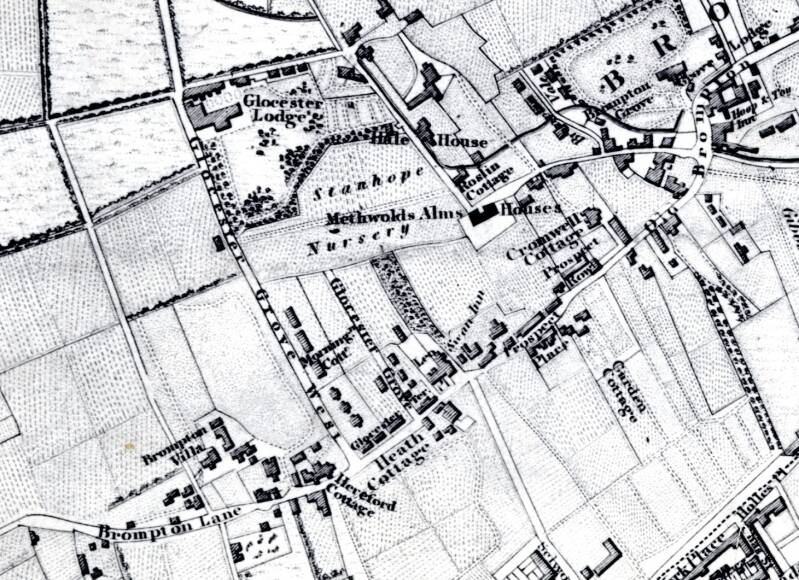
Brompton, sometimes called Old Brompton, survives in name as a WARD in the Royal Borough of Kensington and Chelsea in London. Until the latter half of the 19th century it was a scattered village made up mostly of market gardens in the county of Middlesex. Where the old turnpike highway (Fulham Road) meets today's Thurloe Place and becomes Brompton Road is sometimes called BROMPTON CROSS. The old hamlet of Brompton carried on straddling the secondary Brompton Lane, later Old Brompton Road, for the whole of its length. In modern terms Old Brompton centred on today's South Kensington tube station, Gloucester Road tube station and their contiguous streets, and continued all the way to West Brompton station, between Earl's Court and Chelsea.
You are passing by now…
The otheR Great National Museums in SOUTH KENSINGTON
PRINCE ALBERT thought science to be rather “godless”, however he wished ton encourage its use especially in the manufacturing industry. Though the SOUTH KENSINGTON MUSEUM had some science exhibits, PROFESSOR HUXLEY urged the set up of a SCIENCE MUSEUM, “to remove the displays from its present, filthy, repulsive, unwholesome sheds there”. Building started in 1914, but during the Great War it was used as gov. offices. In 1928, King GV opened the SCIENCE MUS. In 1961 the museum was completed, after the WW2 and postwar delay. Over 7 acres of exhibits about continuing human invention. Here you have some highlights
London’s most handsome and splendid museum building (1880), which expresses the Victorian solemn reverence to and sense of mission in public education. Rhineland Romanesque was the model for ALFRED WATERHOUSE (whose other masterwork is the PRUDENTIAL BUILDING, HOLBORN).
Cathedral architecture. 657 ft of terracotta, from end pavilion to end pavilion. Symmetrical. 190 ft twin towers, above rounded recessed entrance ornate with carvings and pillars.
DECORATED with MOULDINGS representing mammals, fishes, birds. Living (West) or extinct (East) specimens.
The old building houses the LIFE GALLERIES. The GREAT HALL is a soaring, huge space
The palaeontology dept opened in 1975 (East wing).
On EXHIBITION RD., entrance to EARTH GALLERIES.
The GEOLOGICAL MUS. (1935] was incorporated in 1989. Specimens had been accumulated since 1835 as a result of the GEOLOGICAL SURVEY OF GREAT BRITAIN. Before, the exhibits were in 28 JERMYN ST., ST.JAMES, the MUSEUM OF PRACTICAL GEOLOGY op. by Prince ALBERT in 1851. At that time, study and research were prioritised rather than delectation of the general public. NOW, this is part of STORY OF EARTH, an arresting exhibition (from Prehistory to Space exploration)
50 mill.+ specimens, growing by some 350.000 a year (the majority are insects)
Again, HANS SLOANE!
At 4 BLOOMSBURY PLACE, his home, were exhibited plant specimens from JAMAICA (where he fas the governor’s personal physician). His collection outgrew the house, the house next door, and his <<<CHELSEA MANOR. He bequeathed all to the nation, forming the nucleus of the BM (1753], which almost immediately trebled its size and continued to expand, until the place (however enlarged with new wings and annexes) became chaotic, and vast quantities of objects were not even exhibited.
A decision was taken and… the result is the present museum, op. 1881.
Now, Enters darwin!
A huge power struggle had taken place. The founding director 1856 SIR RICHARD OWEN- the natural scientist who came up with the name for dinosaurs - left his role as curator of the Hunterian Museum and took charge of the British Museum’s natural history collection. He was for the move here. DARWIN, hated him and opposed the separation from the BM (thus, separating arts from science).
In 1858, CHANCELLOR OF THE EXCHEQUER DISRAELI was urged by OWEN and other eminent naturalists to move zool., geol., botan., and mineralogical items to a new NHM. For OWEN large specimens (elephant., whales) had to be exhibited as an example of the POWER OF THE CREATOR, thus avoiding any tendency towards D A R W I N I S M.
Ubiquitous FOWKES won the architectural competition, but, as he died within a year, young WATERHOUSE was invited to take over to implement the plan. Construction was delayed (until 1873) and it took another 8 years to open to the public.. WATERHOUSE designed his own building. And some were not happy: for them rules of proportion, rules of taste… all had been defied . For him the whole district was a national misfortune: choosing precisely FAWKE, SCOTT, WATERHOUSE, COLCUTT… as designers of the home of English Art Training was a disgrace.
ADDITIONS
1938 BARON ROTHSCHILD bequeathed to the nation the TRING GEOLOGICAL MUSEUM
1950 NORTHERN BLOCK
1952 ENTOMOLOGICAL BLOCK
1963 BOTANICAL GALLERY
1977 Corner WING (by ELLIS and PINCKHEARD)
HUMAN BIOLOGY HALL. How the human body and mind work
ECOLOGY GALLERY Traces the impact of human activity
ORIGIN OF the SPECIES/ HUMANS’PLACE IN EVOLUTION. Exhibition of DARWIN’s evolution theories
HISTORY OF EARTH. Accompanied by CATO, a time capsule through 4.000.000.000 years

Still more interesting things NEARBY
Just a short walk from Here, near fulham road

The armenian church

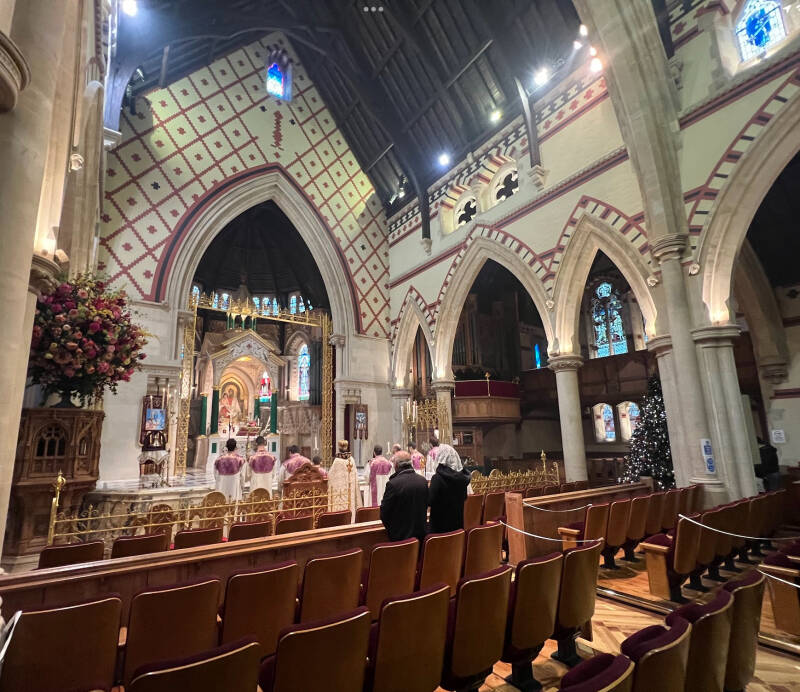
Off old brompton road

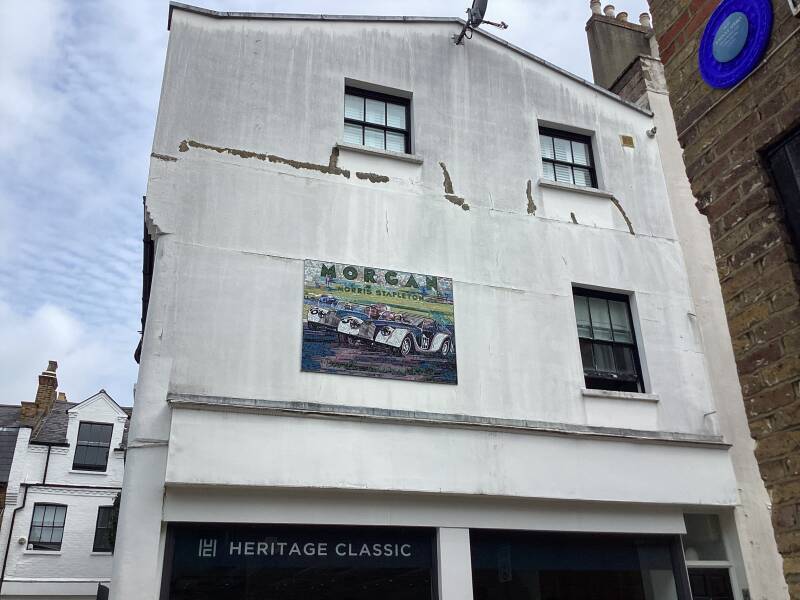
FRANCIS BACON (1909–92) lived and worked at 7 Reece Mews in South Kensington from 1961 until his death in 1992. The Reece Mews studio has been meticulously recreated in the museum of modern art at Kilmainham in Bacon’s native city of Dublin.


Back to the tour: The lbtc takes you along EXHIBITION ROAD, a beautiful paving…
A design competition for plans of how to improve the street's design to reflect its cultural importance was held in 2003 by the Royal Borough of Kensington and Chelsea. The competition was won by the architectural firm DIXON JONES for a shared space scheme for the road and surrounding streets which would give pedestrians greater priority whilst still allow vehicular traffic at a reduced speed. The project also aimed to improve the artistic and architectural merit of the streetscape. The scheme was completed ahead of the 2012 London Olympics. Since the completion of the revised streetscape, its design has been criticised for increasing the accident rate in the locale, with reported conflict between motor vehicles and pedestrians due to the unified surface design across Exhibition Road.

A new courtyard formerly once called “sackler”
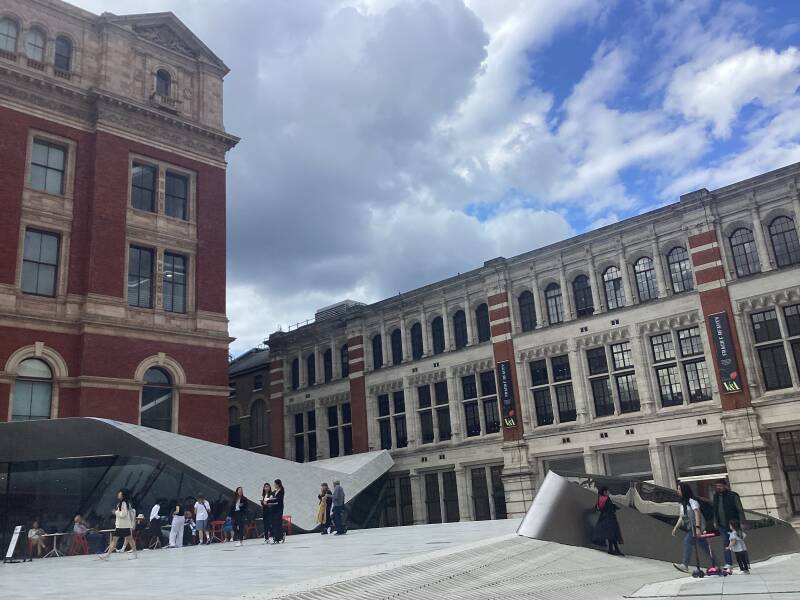
A part of the V&A Exhibition Road Quarter entrance and expansion of the Museum, completed in 2017 and designed by architectural practice AL_A, the firm of architect AMANDA LEVETE.
The courtyard opens out onto the street (Exhibition Road) through a perforated entrance gate. It's made of 11,000 handmade tiles, a reference to the V&A's heritage as a world-leader in ceramic study, collection and preservation. It is the world's first porcelain public courtyard, and special purpose non-slip porcelain tiles had to be created for the project.
The courtyard was named Sackler Courtyard after the Sackler family, associated with the Purdue Pharma company accused of fuelling the opioid crisis in the US. Theresa Sackler, the chair of the Sackler Trust, sat on the V&A's board of trustees at the time the Courtyard was opened.
In 2019 US photographer and activist NAN GOLDIN and her group P.A.I.N.(Prescription Addiction Intervention Now) held their first anti-Sackler performance protest outside of the United States at this place in London, demanding that the museum “abandon the Sackler name”, remove signage at the institution linked to the family and stop receiving donations. Goldin led a group of 30 demonstrators in placing bottles of pills and red-stained “Oxy dollar” bills on the courtyard's tiled floor. At the time, the museum's director Tristram Hunt supported the family and refused to change the name. He told a press conference "we’re proud to have been supported by the Sacklers."
In 2022 the Museum bowed to the pressure and removed the name. No new name was announced at the time for the courtyard, but 2023 maps of the museum show the name Exhibition Road Courtyard in it.
what about a diversion?

And After the VICTORIA & ALBERT… a more urban shortcut towards knightbridge and hyde park corner
PRINCE’S GATE MEWS
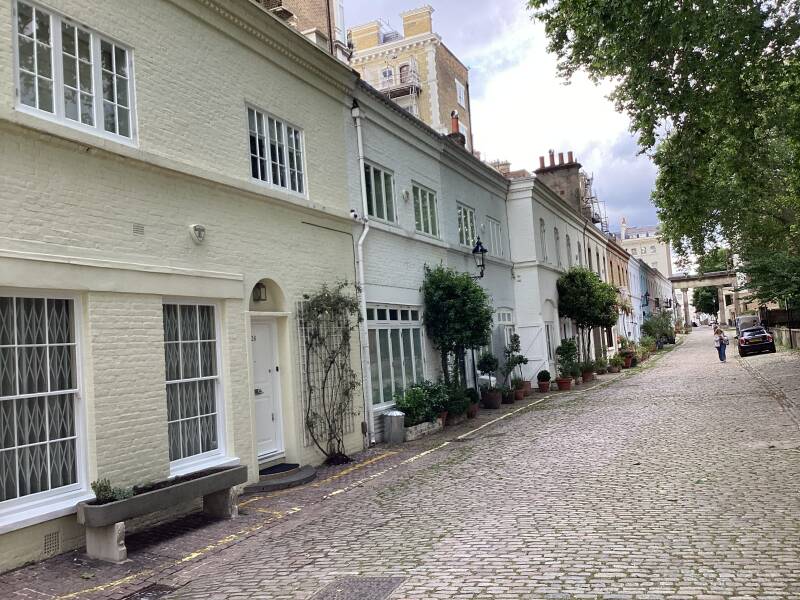
REAR OF HOLY TRINiTY CH

REAR OF. CHURCH OF ST.PHILIP NERY or LONDON ORATORIUM
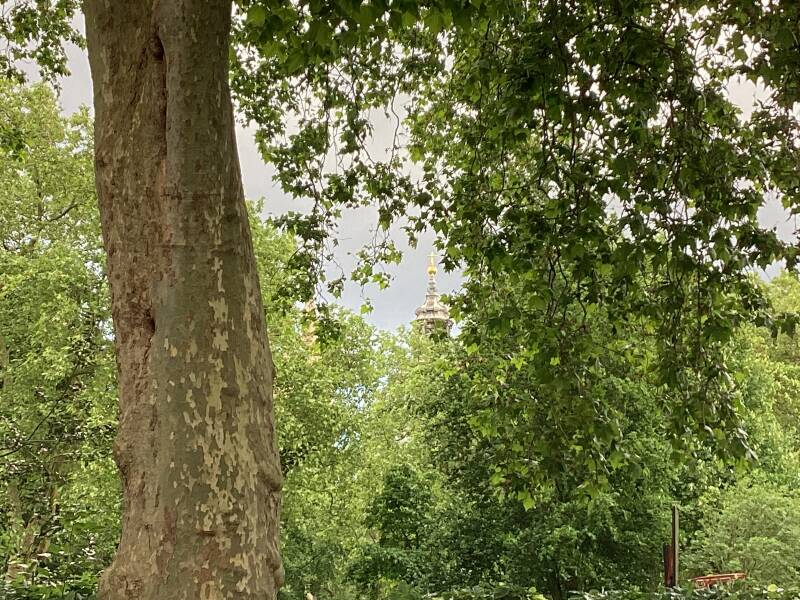
AVA GARDNER flat
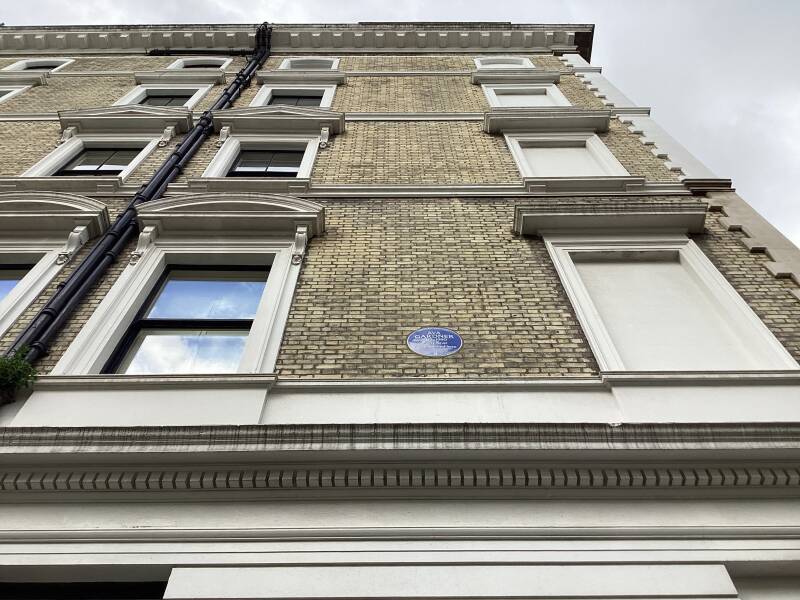
Victorian terraces
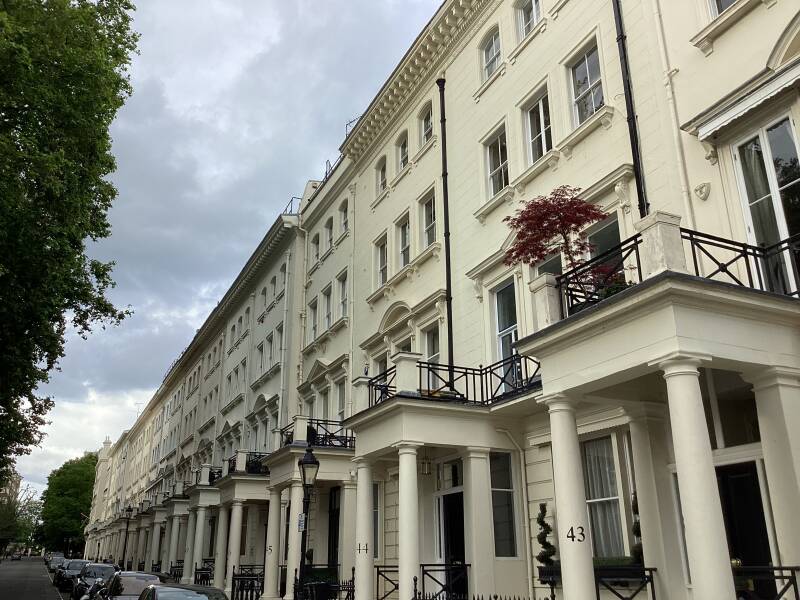

And, then hole in the WALL
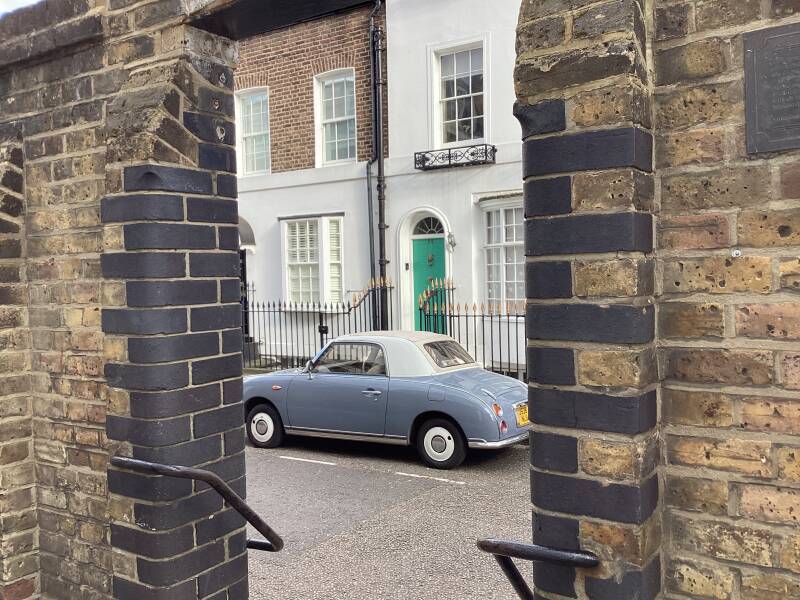

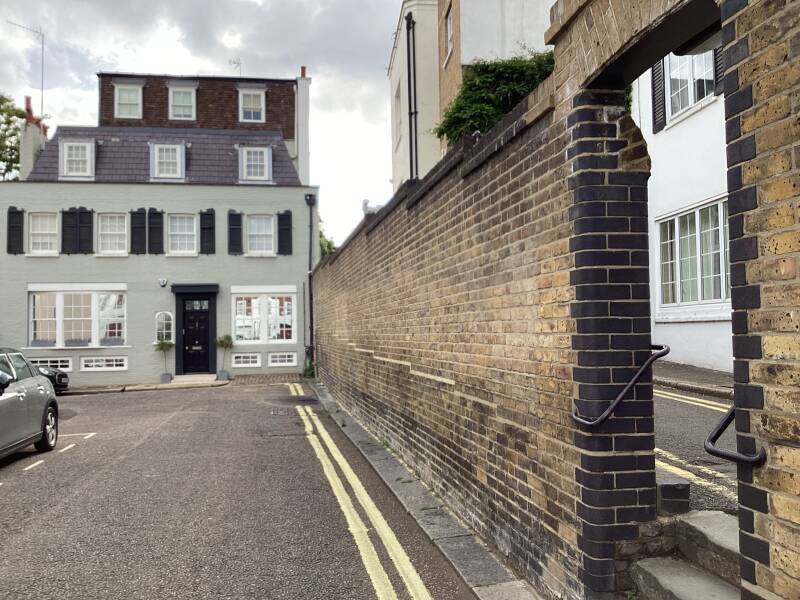
CHEVAL PLACE

MINERAL WATERS


AUCTIONEERS

Montpelier, MONTPELLIER…
In the 18th and 19th centuries the name of Languedocian spa town of Montpellier had been a byword for pleasant and healthy place… No spa here in KNIGHTSBRIDGE, though!. Definitely, a name that occurs very often in England. No doubt, the English were lovers and good patrons of the continental spa towns!
Knightdbridge: When you get to here…
You are now in KNIGHTSBRIDGE. And OLD BROMPTON ROAD is lined with uncountable upmarket shops and eateries
HARRODS

Harvey nichols

KNIGHTSBRIDGE

WALTON STREET
Shops and eateries, at the rear of HARRODS…
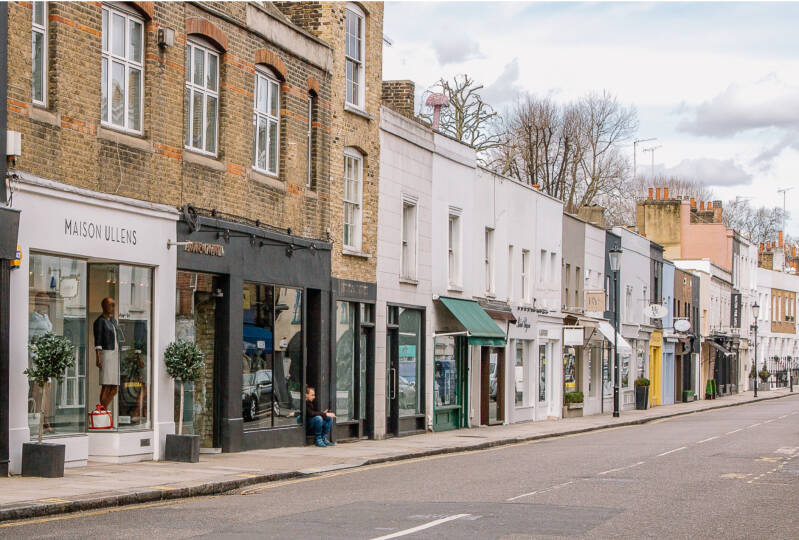
One hyde park

MANDARIN ORIENTAL

Then back to high park, in order to follow The original route towards the end of ROTTEN ROW

Remember, you are following the regular route, along EXHIBITION road…
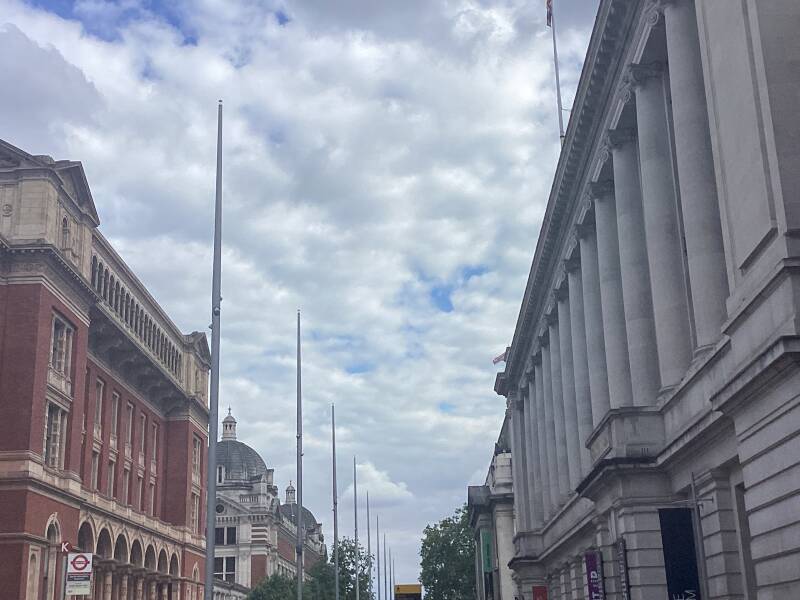
Former Edwardian POST OFFICE BUILDING, now DYSON BUILDING (engineering)

VICTORIAN & MODERNIST SIDE BY SIDE

This art deco apartment block was designed by Adie, Button and Partners, the architects of the spectacular Stockwell Bus Garage.
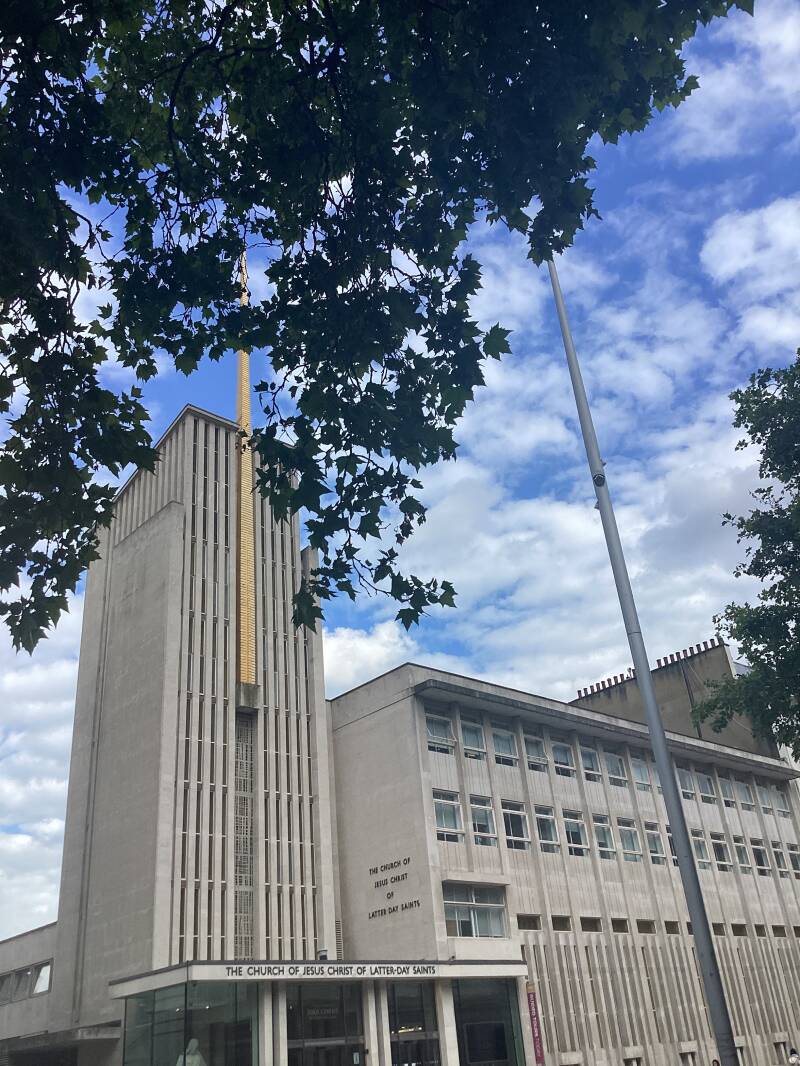
The AMERICAN CHURCH OF LATTER DAY SAINTS is a MORMON CHAPEL. Dating from 1960, is surmounted by a needle spire of golden bricks. Cladded in PORTLAND stone, 4 storey building, in reinforced concrete, incorporating a chapel, cultural hall, children’s section and a family history centre.
A 14-year UCLA study, completed in 1997, tracked mortality rates and health practices of 10,000 members of The Church of Jesus Christ of Latter-day Saints in California, indicating that Church members who adhered to the health code had one of the lowest death rates from cancer and cardiovascular disease in the United States. It also found that Church members who followed the code had a life expectancy eight to 11 years longer than the general white population of the United States (citation from the CJCofLdS)
GOETHE INSTITUTE & STEIN’S german restaurant
German language and culture. Courses, events, exhibitions

Next door to the Goethe-Institut in London, Stein’s Berlin “is an authentic family-owned German & Bavarian restaurant with a touch of class thanks to its Kensington clientele blending with the passion and dedication of German owners Bele & Reinhard Alexander Weiss who opened this third site of the Stein’s restaurant brand here following on from the much-loved Stein’s outdoor restaurant in RICHMOND and Stein’s restaurant & biergarten in KINGSTON-UPON-THAMES”
One of the oldest Polish members’ clubs, founded 1939 to maintain the cohesion of the FREE POLISH community during WW2. It went on to become the London centre of Polish cultural life and culture. The DUKE OF KENT is a patron.
THE POLISH IN BRITAIN
POLISH is one of the most spoken languages in London

kATLYN MEMORIAL. GUMNERSBURY CEMETERY
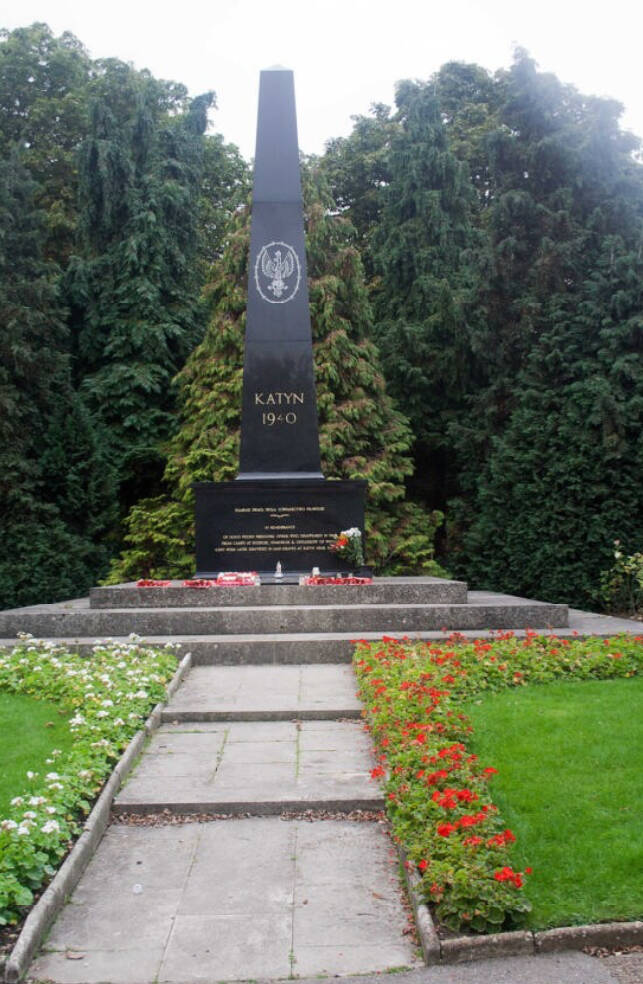
Plenty of POLISH in WEST LONDON, but if you visit the area do not miss:
back to the polish subject: MARSHALL SIKORSKY
RUBENS HOTEL
HEADQUARTERS, very close to VICTORIA STA.
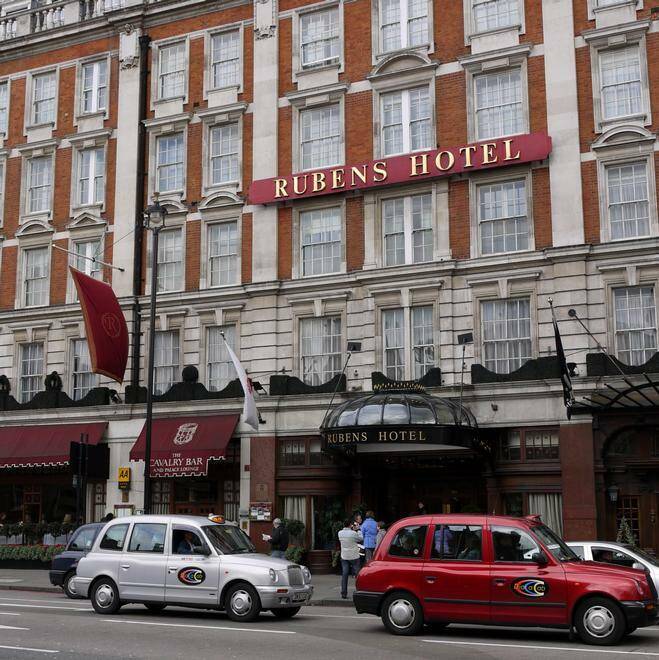

Brick?, stucco?: SOUTH KENSINGTON, a 19th c. A bloodless Battleground: The battle OF THE STYLES
Brick or stucco?

The Battle of the Styles, in Westminster as well
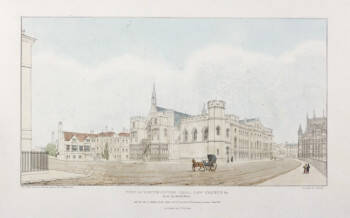
Campus of the Imperial college OF SCIENCE AND TECHNOLOGY

The empire building. The queen’s tower
The IMPERIAL INSTITUTE began as the Indian section, in the KENSINGTON MUSEUM. The Prince of Wales, future EDWARD VII, saw the idea of an EMPIRE MUSEUM as part of the celebrations for his mother VICTORIA her approaching JUBILEE.
After the COLONIAL EXHIBITION of 1886, arch. COLCUTT’s IMPERIAL INSTITUTE began to be erected. Donations came from all over the Empire. The Queen laid the foundation stone, granite from the CAPE, on a pedestal of INDIAN brick. A frontage of 750 ft, with a 2 flanking towers of 176 ft.
The CENTRAL TOWER (QUEEN’S TOWER!), guarded at its feet by a pair of lions, is topped by a copper dome, containing a bell chamber, housing the ALEXANDRA RING, a pearl of 10 bells each named after a member of the Royal family, a gift of an Australian woman.
The INSTITUTE ran into financial trouble, and had to be rescued by the government, in 1898, discharging its debts, but allocating half of the building to the UNIVERSITY OF LONDON.
For the first half of the century , the INSTITUTE was increasingly involved in education. However, when in 1953, plans were made for the expansion of IMPERIAL COLLEGE, they involved its demolition
History, thus, has been preserved in the midst of the present: a compromise was reached after a prolonged campaign against demolition: the QUEEN’S TOWER is still with us, and the chimes still ring out on state occasions.
Artwork
ALERT is a new artwork created for Imperial College London by one of the UK’s most artists, ANTONY GORMLEY.
The work, a 6-metre-high sculpture created using blocks of weathering steel, evokes the human form and asks us to reassess the relation between the body and space. The weathering steel will naturally form a stable oxide coating and an organic hue over time.
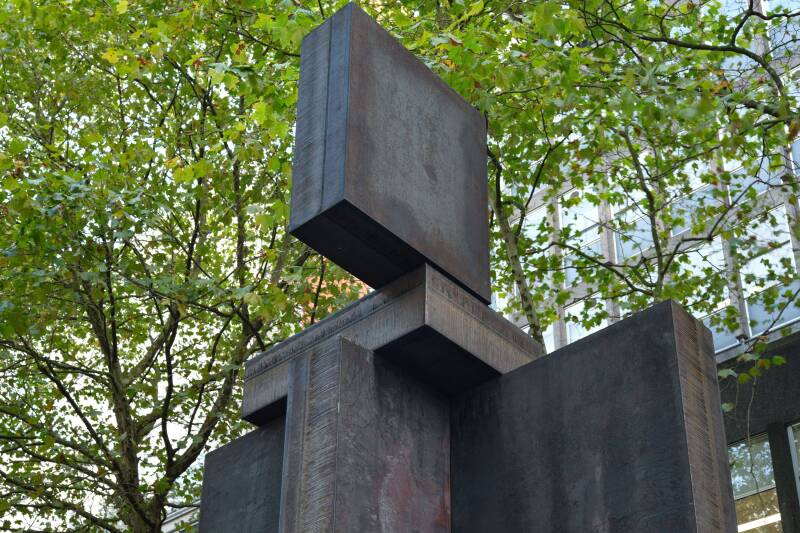
From imperial, to commonwealth institute…to design museum
When demolition began in 1957, plans had already been announced for the new COMMONWEALTH INSTITUTE, in HOLLAND PARK, housed in a building in part preserved in what is now the DESIGN MUSEUM>>>>.
ICST constitutes the science faculty of the UNIVERSITY OF LONDON..
In 1881 the NORMAL SCHOOL OF SCIENCE and the RSCH OF MINES were based in a new building in EXHIBITION RD. Amongst the depart.: mathematics, astronomy, botany, agriculture, mineralogy, metallurgy and geology. In 1890, renamed RCOLL.OF SCIENCE.
1907. Those institutions and the City and Guilds of London Institute were merged to form Imperial College London. Expansion and additions continued into the 20th c., as the departments were extended to keep pace with scientific progress. In 1951 were laid foundations for a chemical technology and aeronautical building, but were held out by a shortage of steel. Two years later the government decided to extend IC to accommodate nearly 5000 students. A vast rebuild was planned, with the vehement opposition by the public, but greeted with pleasure by the academic hierarchy. To appease critics the college assured that the buildings would be large and functional, and modern without clashing with the pleasant legacies of the past.
Arch. NORMAN and DAWBARN. Building went on through the 60s and 70s. Departments and student accommodation were erected . This latter provided in PRINCES SQ. WEEKS HALL was built together with a sports centre (Arch. RICHARD SHEPPARD PARTNERSHIP). New roads were provided: FRANKLAND ROAD, was named after SIR EDWARD FRANK, Victorian laboratory planner.
1988. The Imperial College School of Medicine was formed through a merger with St Mary's Hospital Medical School.
2004, Queen Elizabeth II opened the Imperial College Business School.
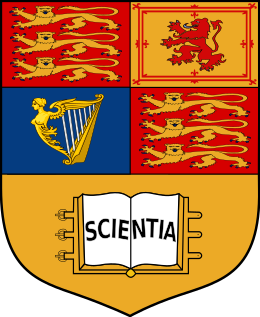
HG WELLS attended the college, but he did not enjoy a successful career, and dropped. However, something he learnt… and made some use of it in his sci-fi books and romances, particularly LOVE AND MR.LEWISHAM AND TONO-BUNGAY, in which the hero GEORGE PONDEREVO enrols here.
Top of exhibition road, best seen later from the PARK side
Lowther lodge, now The ROYAL GEOGRAPHIC SOCIETY hqs

Lowther Lodge was built in 1874 for the William Lowther by Norman Shaw, one of the most outstanding domestic architects of his day. Extensions to the east wing were added in 1929,
The RGS was founded in 1830 under the name Geographical Society of London as an institution to promote the 'advancement of geographical science'.A new impetus was given to the society's affairs in 1911, with the election of Earl Curzon, the former Viceroy of India, as the society's President (1911–1914). The premises in Savile Row (once described by Curzon as "cramped and rather squalid")[5] were sold and the present site
purchased
The Society has been a key associate and supporter of many famous explorers and expeditions, including those of DARWIN, SCOTT, SHAKLETON…
Events and exhibitions
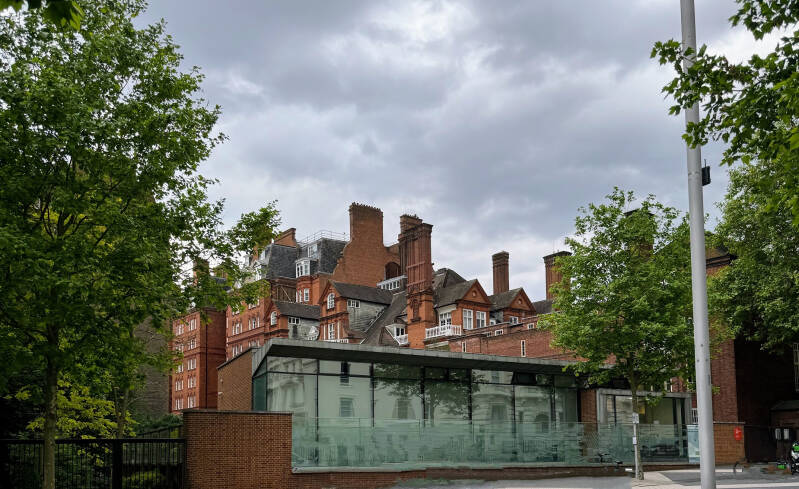

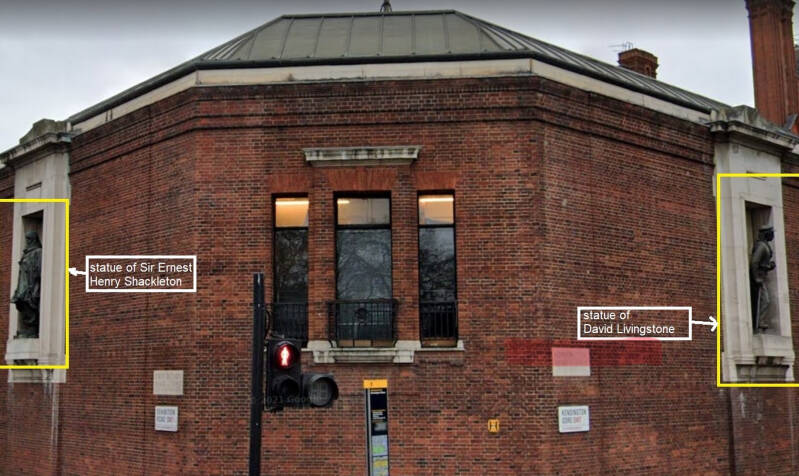

MILEpost
Amongst the items that have survived along the urban streetscape of London are included the odd milestone and its often slightly newer counterpart the metal milepost.
Mileposts were provided along many of London's main roads but the motorization of traffic and explosion of road-signage made them less useful and they ceased to be maintained and when damaged or in the way were often removed. In consequence, the fortunate survivors are comparatively rare beasts and there is some effort being made to preserve them.
First survivor along the Bath Road. This surpringly big, solid, cast-metal mark in Kensington Gore is one of the largest and is perhaps unique, as is dated 1911 making it implausibly recent. Its design would suggest a much older model and maps indicate much older marks on this site, so it is perhaps a replica.

In old Anglo-Saxon “GORE” was a narrow triangular piece of land, wedge-shaped. The GORE ESTATE had, at its centre, GORE HOUSE
Kensington gore. Site of gore house: wILBERFORCE, The countess of blessington, the count d’orsay
The residence of WILLIAM WILBERFORCE until 1821.

In 1787, Wilberforce came into contact with Thomas Clarkson and a group of activists against the slave trade, including Granville Sharp, Hannah More and Charles Middleton. They persuaded Wilberforce to take on the cause of abolition, and he became a leading English abolitionist. He headed the parliamentary campaign against the British slave trade for 20 years until the passage of the Slave Trade Act of 1807.
In 1820, after a period of poor health and with his eyesight failing, Wilberforce further limited public activities,[171] although he became embroiled in unsuccessful mediation attempts between King George IV, and his estranged wife Caroline of Brunswick, who had sought her rights as queen of the realm.[1] Wilberforce still hoped "to lay a foundation for some future measures for the emancipation of the poor slaves".[172] Aware that the cause would need younger men to continue the work, in 1821 he asked MP Thomas Fowell Buxton to take over leadership of the campaign in the Commons.[171] As the 1820s continued, Wilberforce increasingly became more of a figurehead for the abolitionist movement,
Then It was sold to MARGUERITE, the COUNTESS OF BLESSINGTON (married Irishman Charles John Gardiner, 1st Earl of Blessington, a widower married to the COUNT D’ORSAY). She was an Irish novelist, journalist, and literary host, who had acquaintance with and, in 1839, published CONVERSATION WITH LORD BYRON, one of the annuals she edited. The BLESSINGTONS met COUNT D’ORSAY, who married Harriet Gardiner, Lord Blessington's only daughter by his former wife. After the death of LORD GARDINER, MARGUERITE and ORSAY lived together here , then moved to Paris (D’ORSAY had escaped his creditors before). She died in Paris, in 1849.
With COUNT D’ORSAY here a literary saloon was established, including DISRAELI, DICKENS, HC ANDERSEN…
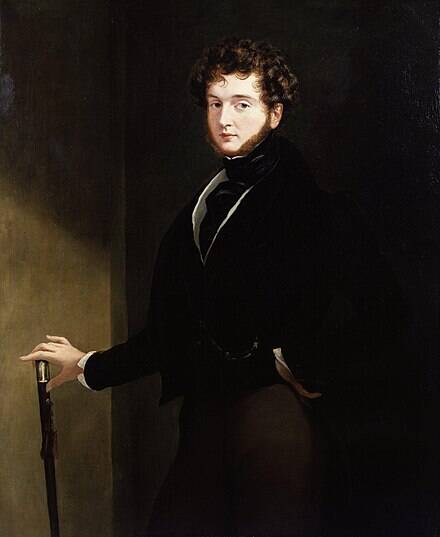
D’ORSAY was an artist and a dandy. Il créa des parfums pour son égérie. En 1865 sa famille a décidé de l’être en valeur l’héritage olfactif et en 1908 a autorisé a créer une société de parfums, qui a devenu la COMPAGNIE FRANÇAISE DES PARFUMS D’ORSAY
D’ORSAY s’est fait fabriquer un nouveau modèle de voiture dite COUPÉ D’ORSAY, qui a connu un grand succès en Angleterre
FROM SOYER to THE STONES
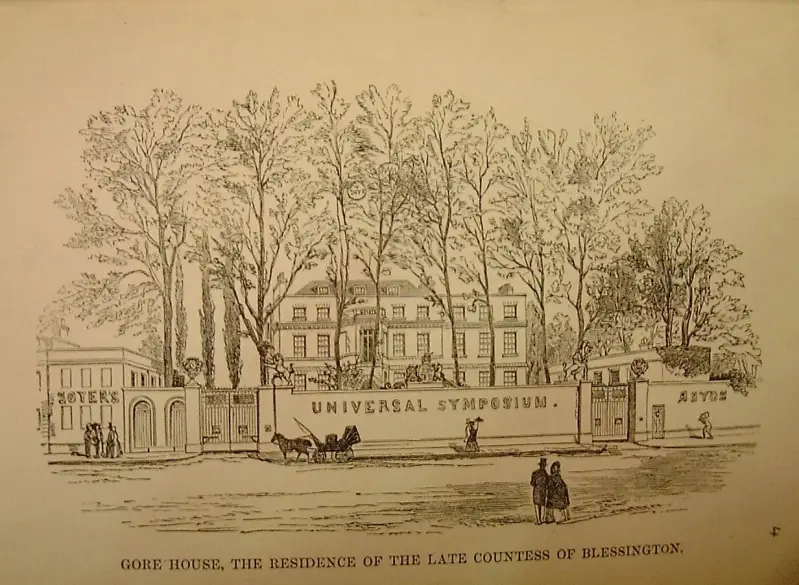
The gifted French chef ALEXIS SOYER managed the GE1851 restaurant in GORE HOUSE. Alexis Soyer is remembered for many things. He was saviour of the Irish famine creating soup kitchens capable of feeding thousands of starving people. The SOYER stove revolutionised army catering during the Crimean War (and beyond). Perhaps a little less is known about his Gastronomic Symposium of All Nations situated in Gore House close to the Great Exhibition of 1851.
Christmas 1851. London was triumphantly asserting itself as the centre of the world. This was the year of the Great Exhibition, one huge show-and-tell at the Crystal Palace; a self-congratulatory jamboree on the wonders of the British Empire and the power of modern industry and technology. But for all the city's wealth, countless Londoners lived in squalor and hunger, or else suffered the indignities of the workhouse.
It was also a city uniquely gifted with philanthropists, do-gooders and the agents of Christian charity. With winter setting in, the newspapers were filled with appeals to help the needy. "The outdoor poor... the casual poor... the thousands in London who are ashamed to beg," would be particularly hard-hit by a lack of food over Christmas time. Various institutions provided handouts and shelter, but a one-off feast in the streets of SOHO would fill the bellies of unprecedented numbers of impoverished Londoners. At the centre of proceedings was ALEXIS SOYER, often called the first celebrity chef.
Gore hotel
In 1892, The Gore Hotel was opened by sisters Miss Ada and Ms Cooke, descendants of Captain James Cook. The 50-bedroom luxury hotel has featured in many music videos and photo shoots, such as for Beggars Banquet by The Rolling Stones.

NEARBy: kensington!. WHY NOT A SMALL DETOUR?. And, afterwards, notting hill…
Dutch embassy
The MILESTONE HOTEL
ST.MARY-ABBOTTS CHURCH
Roof gardens

And Notting hilL is not far AWAY. On your way you might by visiting…
The churchill arms PH
The windsor castle ph
A little further “up-hill”…
Museum of brands
PORTOBELLO ROAD
Golborne road
KENSAL GREEN CEMETERY
One of the MAGNIFICENT SEVEN
And many, many, more interesting places!
Princes gate: ALONG KENSINGTON GORE, THE MAIN ROAD, you will find…
THE KENNEDYs DWELLING
The building used to be the residence for the United States Ambassador to the Court of St James's (i.e. Britain) a post held, 1938 - 1940, by Joe Kennedy, Sr, JFK's father. While there Joe supported appeasement to the extent that he was recalled for fear of his Nazi sympathies. JFK was aged 21 - 23 and spent much of the time touring Europe but he certainly spent some time here with his father.
In 1921 JP MORGAN JR. gave the property to the US Government as a home for the American Ambassador. It was remodelled internally and the distinctive native American keystones were added.
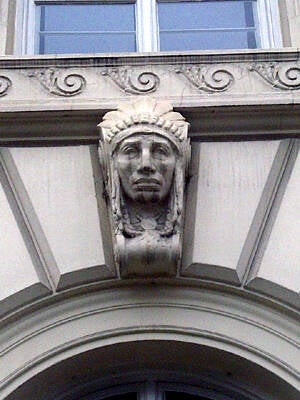

JP MORGAN booked on the Titanic but cancelled his ticket the day before the ship sailed. He owned the company that owned the ship and there is a suggestion that he knew it was not safe to travel.
sikorsky museum


Your tour continues turning left, alongside prince consort road
ROYAL COLLEGE OF MINES

1913. Arch. ASTON WEBB. Stone. Apsed entrance, flanked by giant sculptures. The buildings are vast, but homogenous in proportion, human in scale, clean lined, right-angled, and hollow square ranges, surrounding interconnected quadrangles.
ROYAL COLLEGE OF MUSIC
Foundation stone 1890: The brass band of SAMSON FOX LEEDS FORGE (who had given £30.000 towards the cost of the building) nearly blew the marquee away!. Op. 1893. Arch. Sir Arthur BLOMFIELD (born in FULHAM PALACE, as his father was the Bishop of London, and great church builder). He was apprenticed with HARDWICK. And future writer THOMAS HARDY joined his practice. Neo-Gothic, Flemish Mannerist
Separate entrances: men / women
It works as a conservatory; undergraduate to doctor in Western Music (classical). Top institution in performing arts.
Saturdays’ Junior dept., for kids.
Principals of major London orchestras are faculty members.
Exhibitions: Dept. of PORTRAITS. MUSEUM OF INSTRUMENTS (from the 15th, mostly European). HANDEL spinet, HAYDB clavichord.
Performing venues: FLEMING CONCERT HALL, BRITTEN THEATRE, RECITAL HALL, PARRY ROOMS
RICHARD NORMAN SHAW, the great archiect: ALBERT HALL MANSIONS
Some of the FIRST apartments developments built in London for the aspirational middle and upper middle classes (the FIRST were b. in VICTOIA ST, 1865]. Before, only social, housing reformera PEABODY, WATERLOW, SUTTON, IMPROVED DWELLINGS… etc had built high rise flats.
In London a. Rooted prejudice against apartment living, gave way to a Parisian mode of life, more cosmopolitan.
Now, the wealthy demanded a pied-a-terre, but preferred communal services (kitchens, dinning, recreation) and shared servants, all provided by the landlord. Trendy life, and saving money!.
It was called the HANKEY SYSTEM. Sir HENRY HANKEY, banker and speculator, had been QUEEN’S ANN MANSIONS. Like a hotel, and a commercial success.
According to the TIMES : an eyesore, a disgrace, bigger than the Tower of Babel.
Here, thanks to the patronage by the GE1851 COMMISSIONERS and NORMAN SHAW, the development contributed to alter the negative perception.With an image of orderliness and picturesque romance. However, the only communal services here were porter, servants and a kitchen. Tall reception and dinning rooms.
Split level apartments.Bachelors attics.Public lobbies (very Parisian).
The first blocks, facing the park, did not have lifts. Afterwards, American Elevator Co. installed hydraulic lifts. In 1884, the first public high press water works by London Hydraulic Power Co.
Note the under pavement coal cellars. The servants had a párate entrance rope and pulley lift to transport coal.
he was on the red brick side of the controversy
Mansion flats
At the end of the 19th century London was transformed from a typical trading port into the capital of a huge empire as increased commerce, brought about by the Industrial Revolution, accelerated the growth of the empire. By the end of the century London’s population had grown from over a million in 1800 to six million. This spurred much speculative housing development generally and on the great Estates, including Belgravia and Bloomsbury. Greater London was now the largest city ever known. In 1900 London was firmly established as the capital of the world’s largest empire.
During the 1880’s the concept of flats for the middle classes began to catch on. Flats were designed to attract upper-class families who lived in the country but spent a few months in England each spring, coming for what was called the season. The season was a period of intense socialising when the aristocracy traditionally gathered to secure marriages that help to cement fortunes.
Flats were ideal for families who only spent a portion of the year in London. Mansion flats offered the chance of living in a self-contained property close to the centre of London and provided all the comfort their owners needed and were accustomed to – bedroom, bed dressing room, boudoir and drawing room.
One of the biggest selling points of a flat was the smaller number of servants required to maintain a flat. Having all the rooms on one floor immediately cut the number of servants required.
Following WWI and by 1918 the British Empire was in decline and, along with many other things, this bought an end to the building of Mansion Flats. By the 1920s the brief era of Mansion flats had passed in and building activity concentrated on the continued Suburban expansion. In England and Wales four million new homes were built in two decades many of these were for the returning ‘homes for heroes’ in the form of semi-detached and single family dwellings.
SIR MALCOLM SARGENT lived here
Remembered as a conductor, but trained as an organist (next door) and became a great cathedral organist.
Made his debut as a conductor at the 1921 PROMS. Late 1920s worked with DIAGHILEV’s BALLET RUSSE.
1950s. First conductor of BBC SYMPHONY ORCHESTRA
A PRINCE ALBERT StatuE (THE UNWANTED ONE)
This statue was first located in the HORTICULTURAL SOCIETY garden. In fact, this was the first monument mooted in his honour, the one that he declined.
But later, the figure of BRITANNIA was substituted. She was superseded by a statue of QV, but as the prince died before completion, he was made the subject again!. And the flight of granite steps was built free of charge by JOHN WELK.. And the builder offered to do the monument at cost price and to pay for any excess over the estimate.
Former national training school for music, former ROYAL COLLEGE OF ORGANISTS,

The NTSch.for M is part of RAM. The RCO is now based in Birmingham.
1875, in a NEO-JACOBEAN style. The idea of NTSfM was from Prince ALBERT. In 1876 ARTHUR SULLIVAN became principal. Their vision, during the building of MUSEUMLAND, was the creation of a school with a wider acceptance of music students than the elite of the ACADEMY at MARYLEBONE.
Financed by Sir ChJamFREAKE, builder of the SMITH’S CHARITY ESTATE, on a site leased by the COMMISSIONERS, where “the strange sounds of practicing would be least inconvenient to the neighbourhood “.
RE LT HH COLE (HENRY COLE’s son) and florid, ornate , decorations by FW MOODY (teacher at the NATSch; and the work, executed by his students), that almost obscure ihe small BUILDING: Chocolate brown panels, patterned in cream, sky blue sgraffito, a frieze of putti, carrying musical instruments, garlands incorporating the VR monogram, around the door
ROYAL COLLEGE OF ART
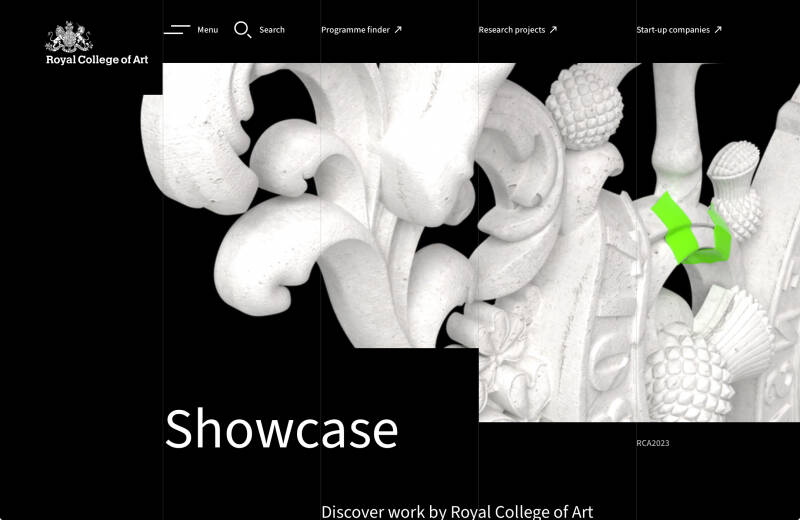
Arch.CADBURY-BROWN. 1961. DARWIN BUILDING. 8 floors of studios and workshops. Of purple brown brick, dark concrete and glass. Without any applied ornament. Unique in this district!.
Originally, the METR.COLL.of DESIGN, established in 1837 in SOMERSET HOUSE. Moved to EXHIBITION ROAD, as part of the SKENMUS in 1863, until 1961.
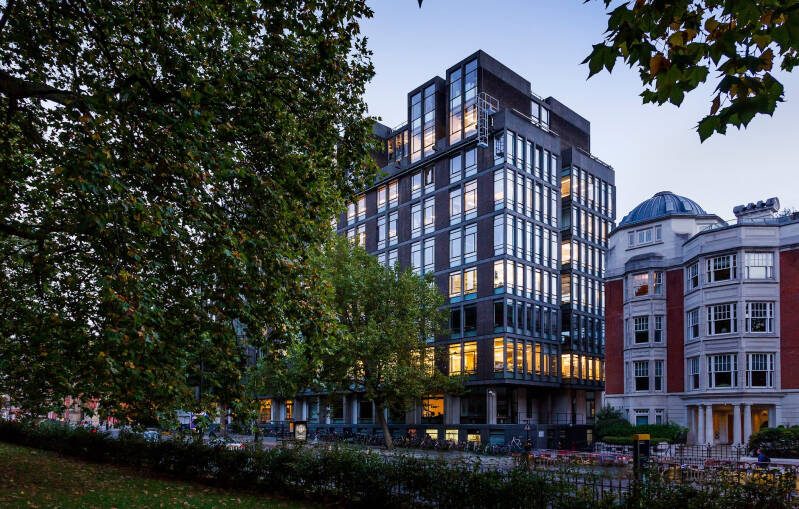
The royal ALBERT HALL
What about elizabeth ii and prince philip?
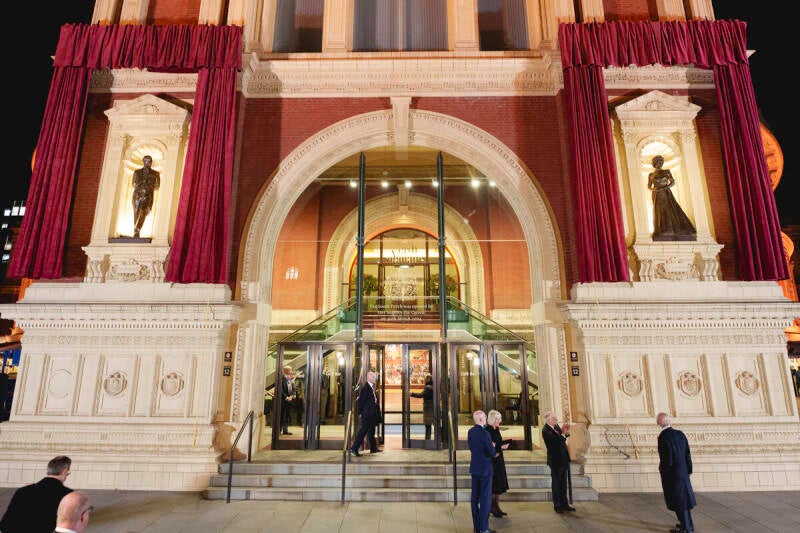
The entrance to door 12 on the south steps is now flanked by two-metre bronze figures of Queen Elizabeth II and Prince Philip, Duke of Edinburgh. The permanent additions to the building, created by artist Poppy Field, were unveiled by His Majesty The King when he attended the Festival of Remembrance in. Kvember 2023.
A chimney?

Used to exhaust the gasses from the hall's boilers.
For more knowledge of the RAH: See next chapter, 4 b

Free French

Proms

ERIC CLAPTON

Suffragists

Tennis
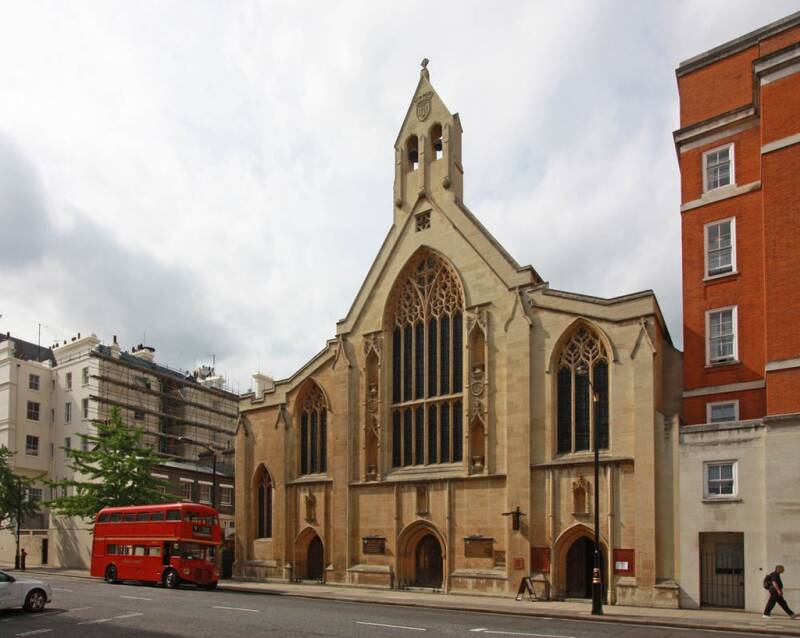
Built in 1901, thus a NEO-GOTHIC church
Designed by GEORGE BODLEY, great church arch., nearing the end of his career. In the style and manner of a 14th c town church, to serve the dwellers of the newly created district. The organ of the demolished -1870-KNIGHTSBRIDGE CHAPEL was recased then (and rebuil in 1958).
The East wall is windowless in anticipation of being overlooked by adjacent developments, thus breaching the east end altar tradition. Interesting decoration.
After 1901 boundary changes, you are in WESTMINSTER
QUEENS GATE. BENNY HILL LIVED HERE!
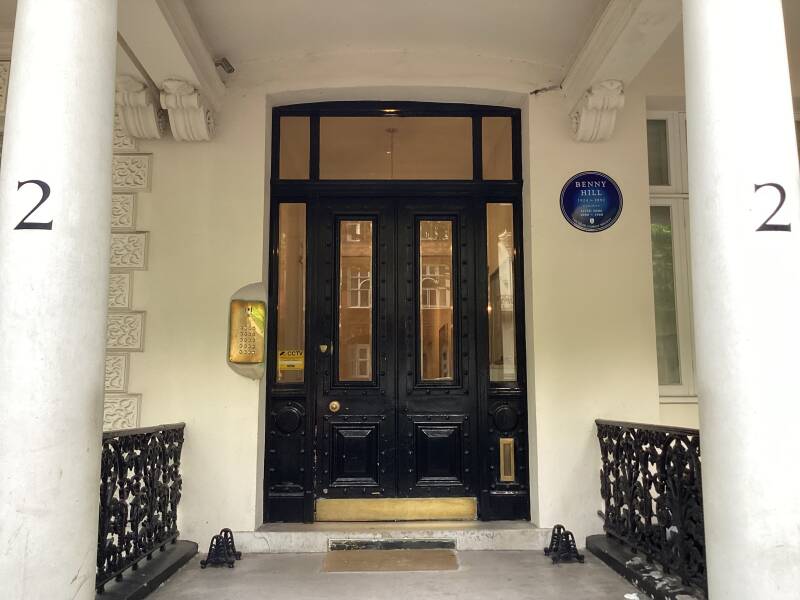
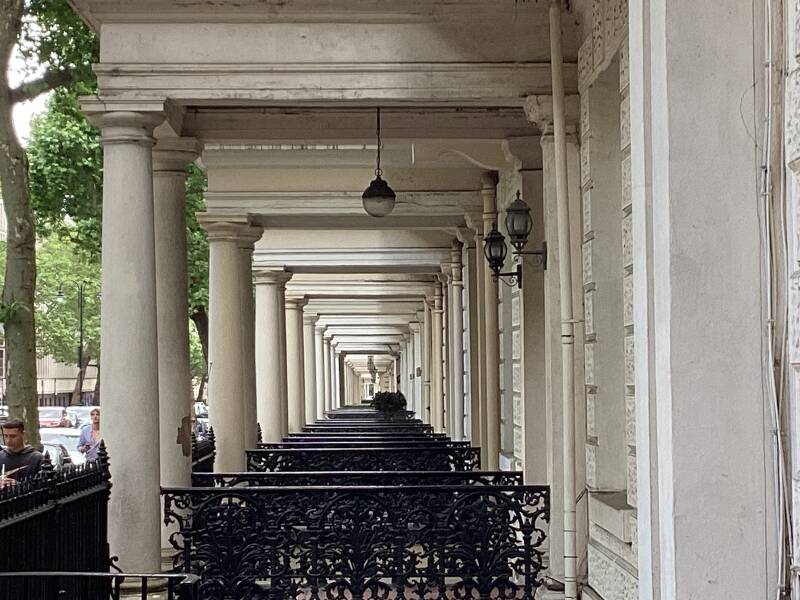


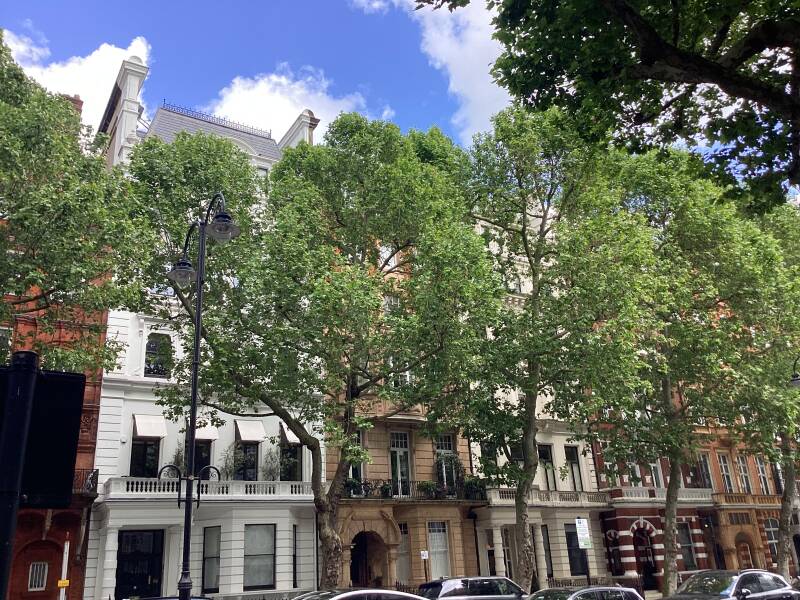

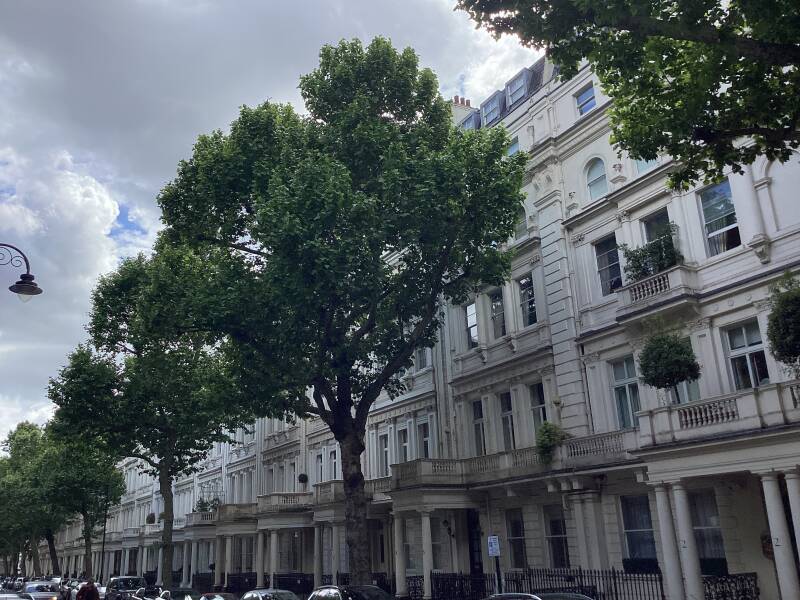

A little detour?. NEARBY, QUEEN’S gate mews PH

The Queen’s arms ph
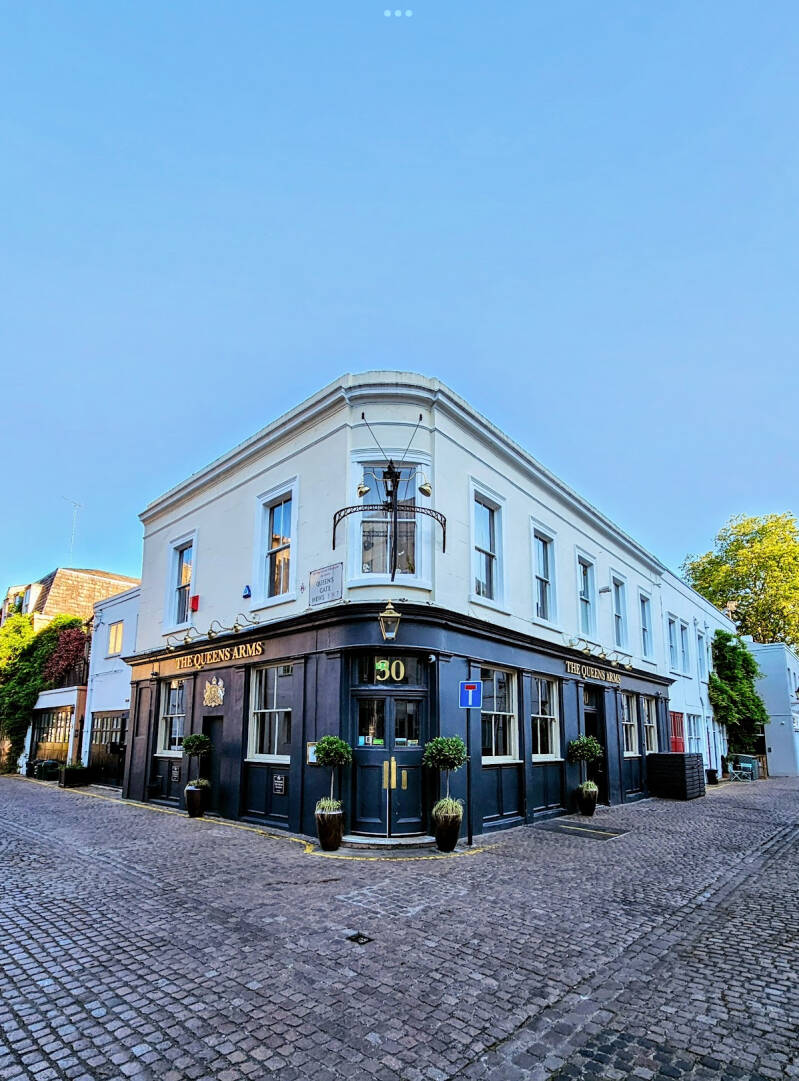
Former Jacob epstein studio
Voysey house

After crossing KEnsington ROAD
KENSINGTON GARDENS. The queen’s gate
Queen's Gate is the formal entrance to Kensington Gardens at the northern end of the road called Queen's Gate. It must be one of the most imposing entrances to any public park.
Made of iron; display Royal Coat of Arms.

And i hope that you keep enjoying this guide

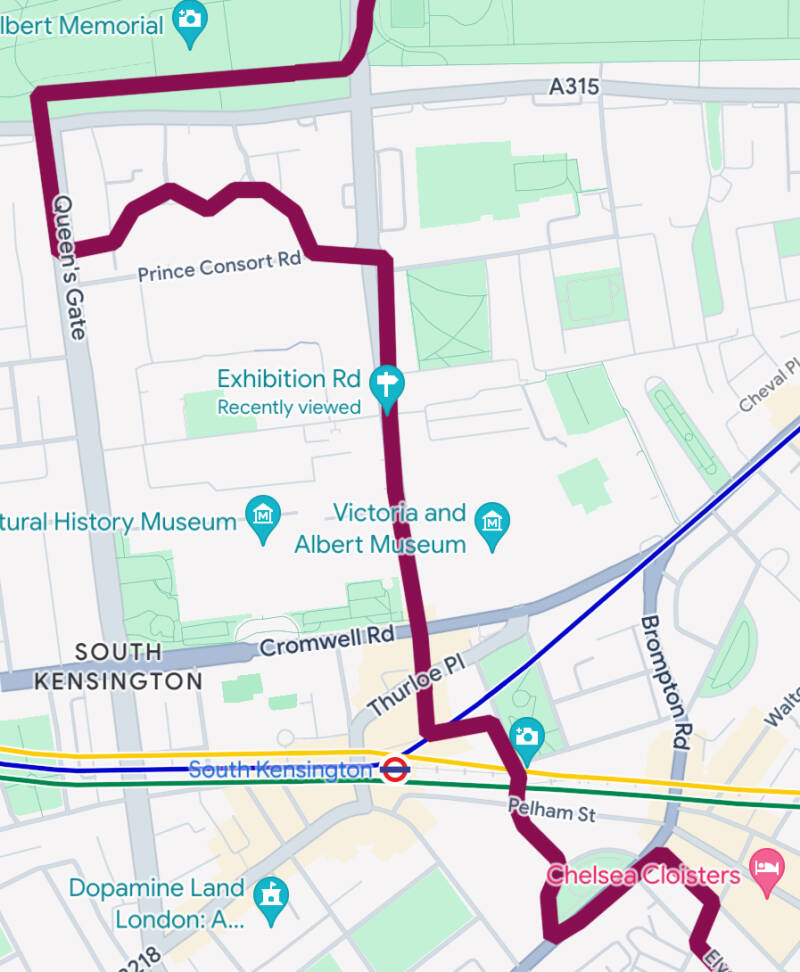


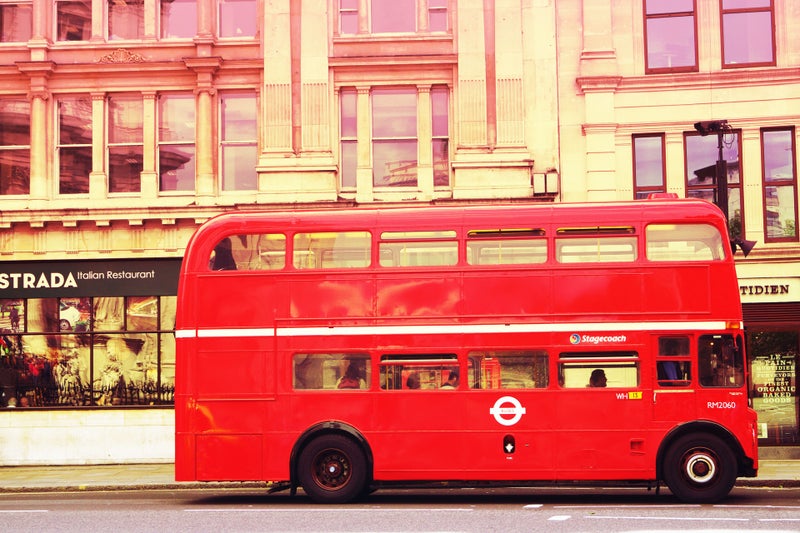
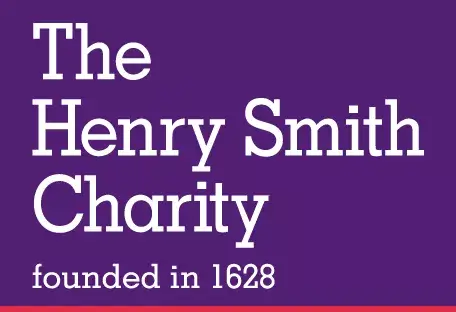
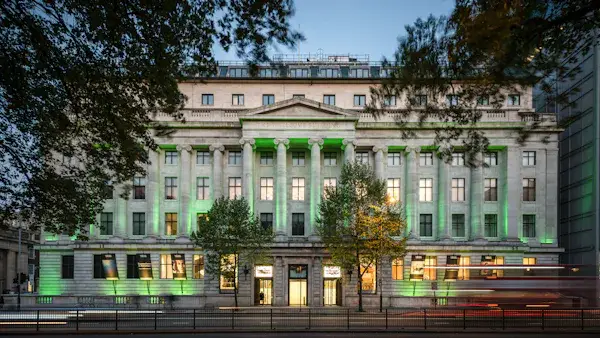
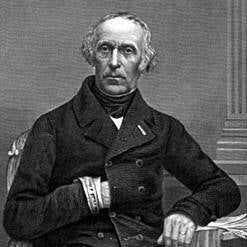

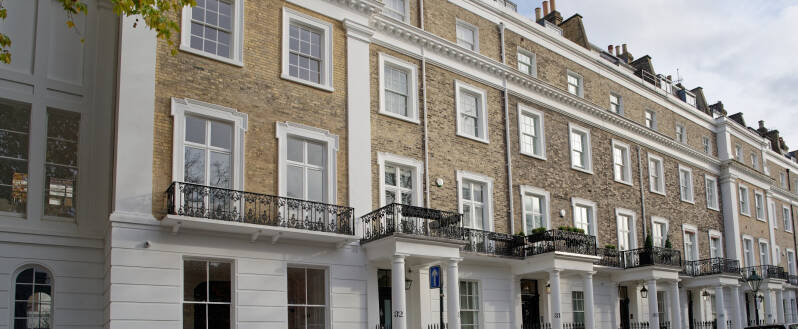


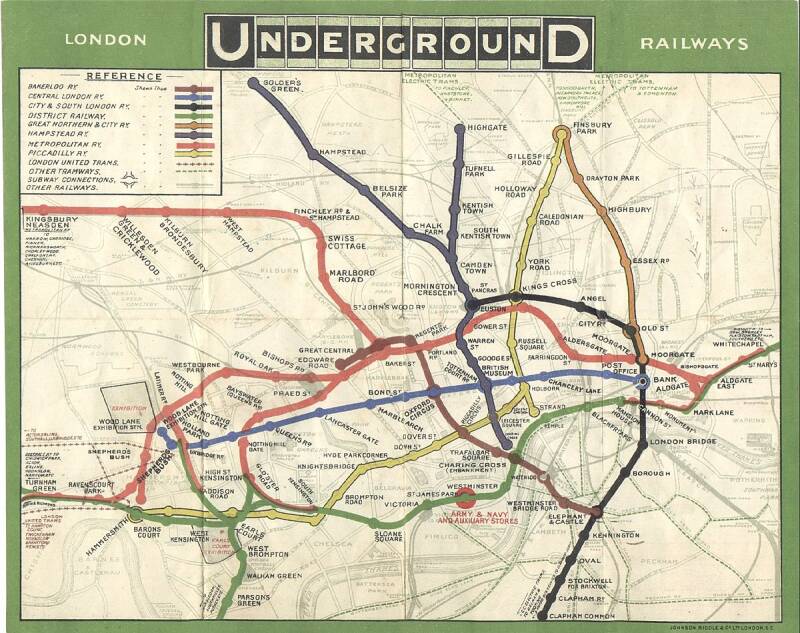

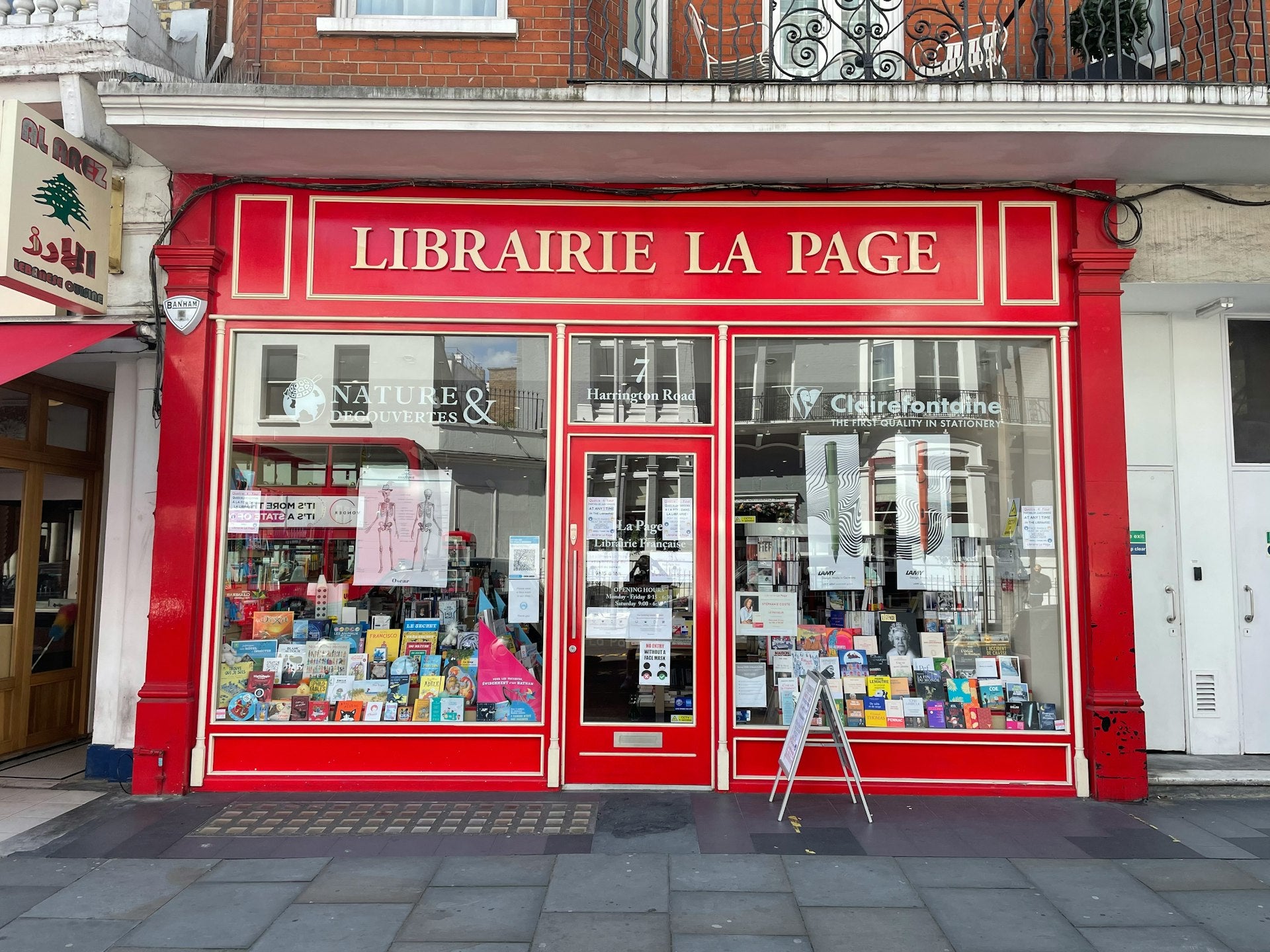
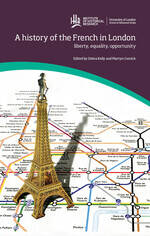



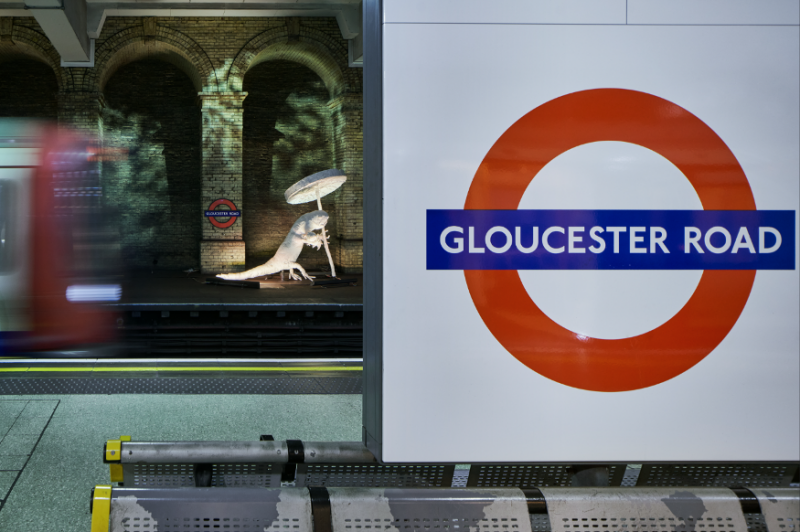
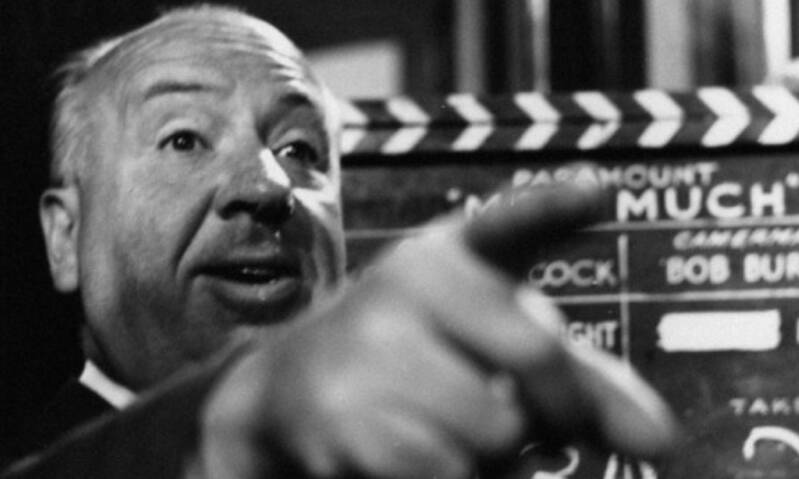


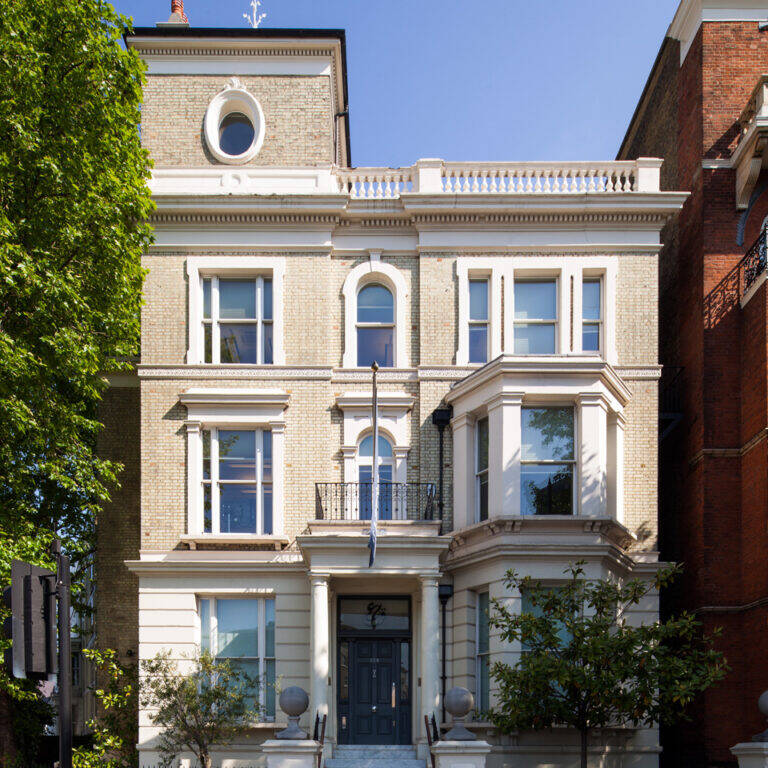

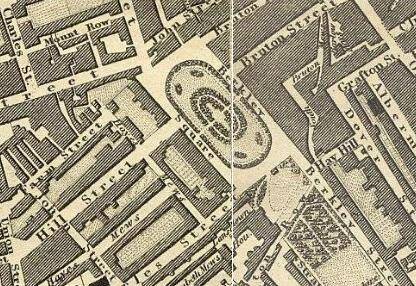
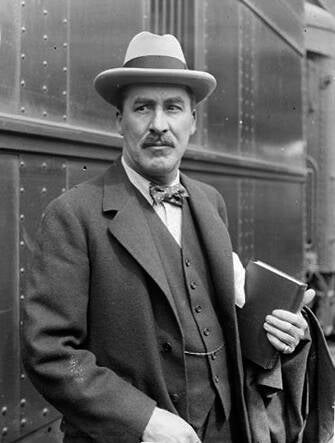
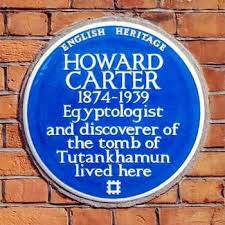

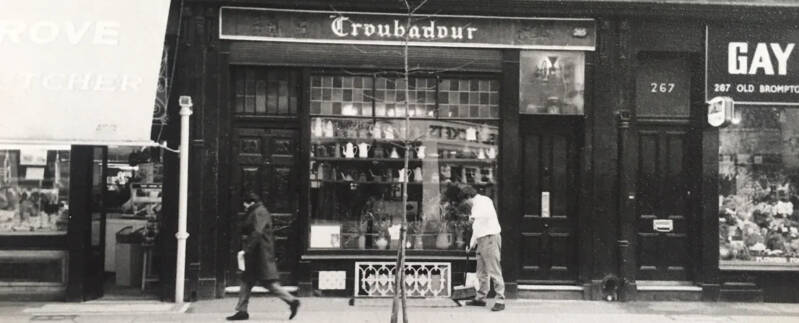
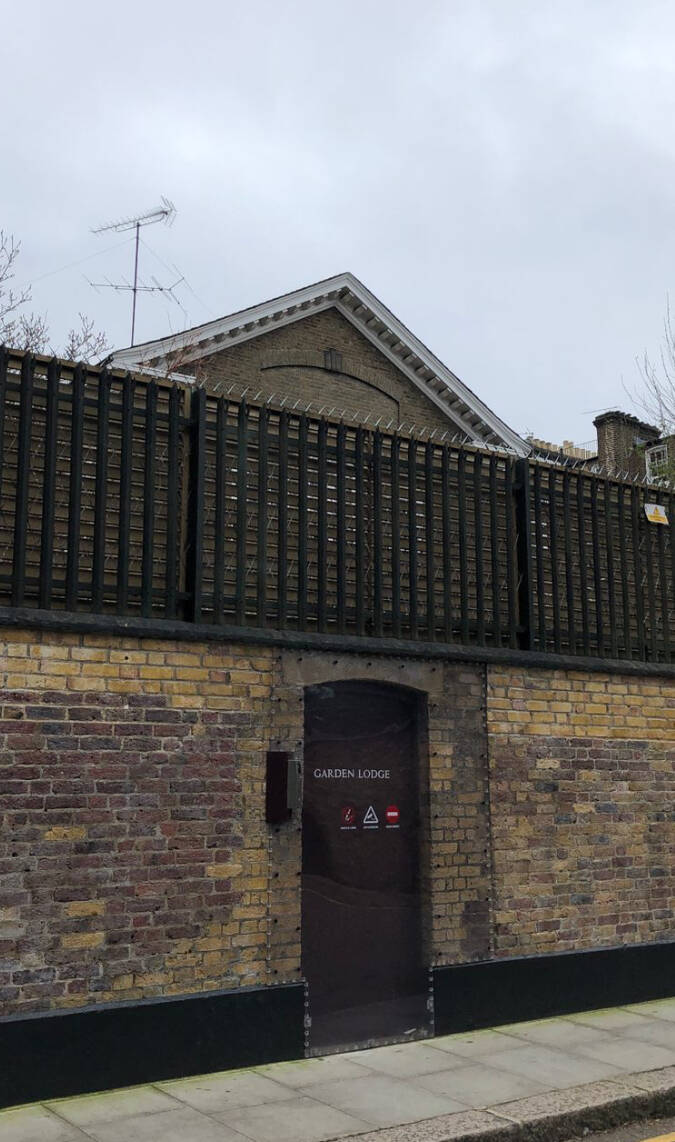





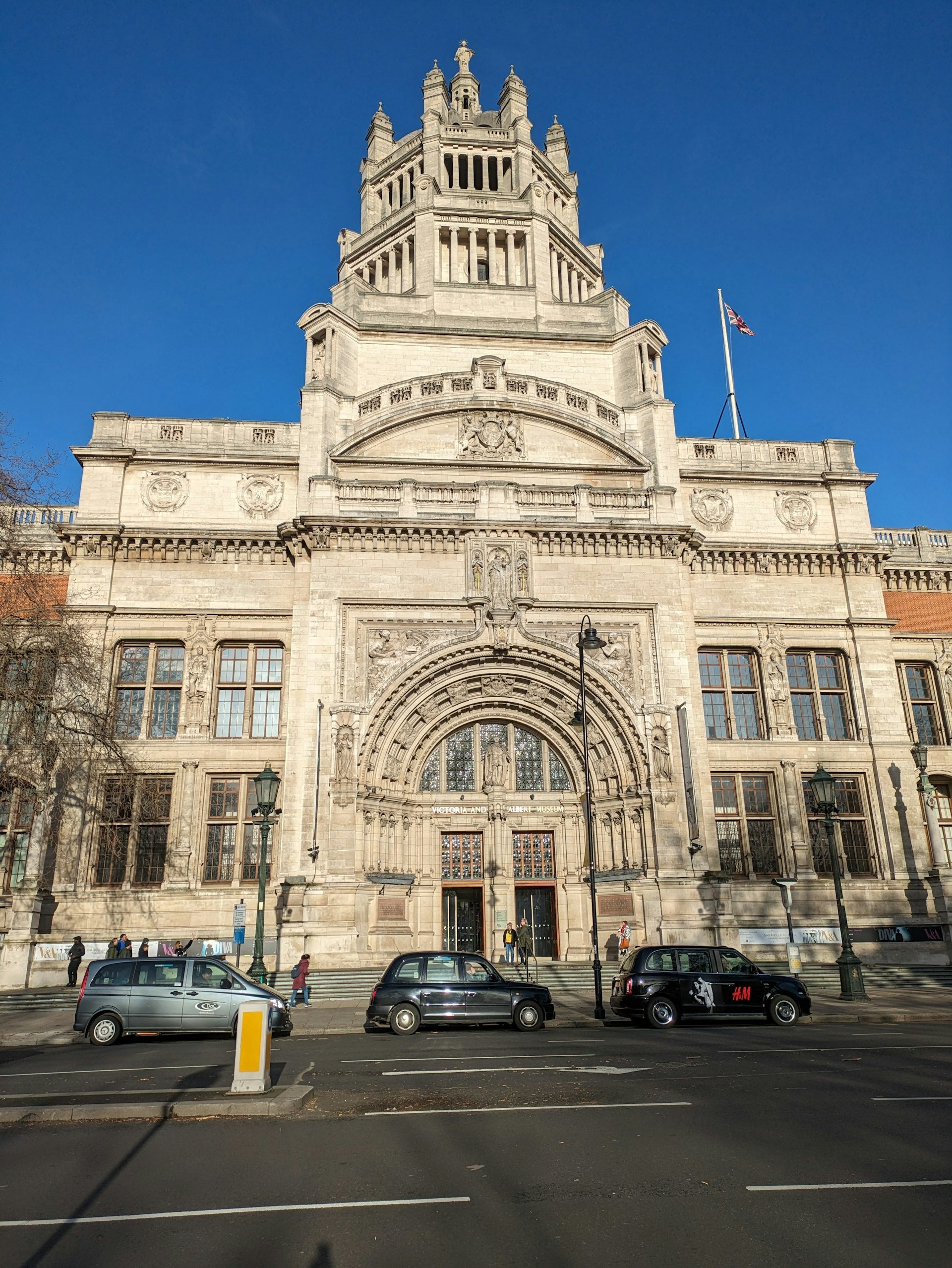

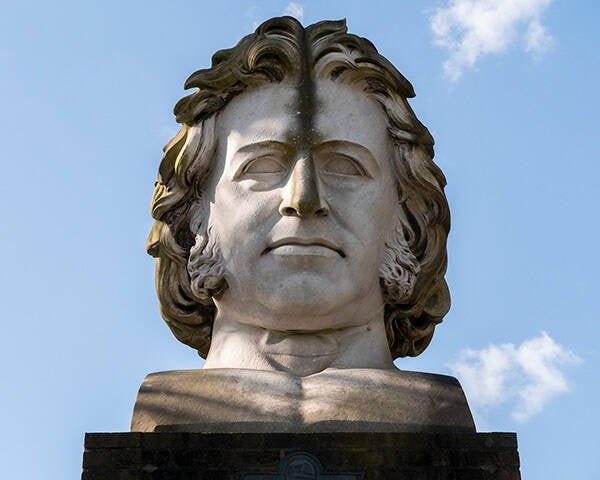
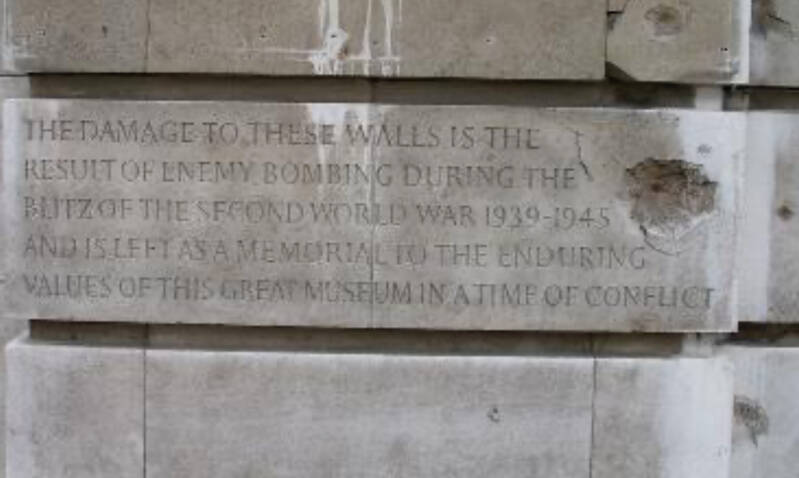

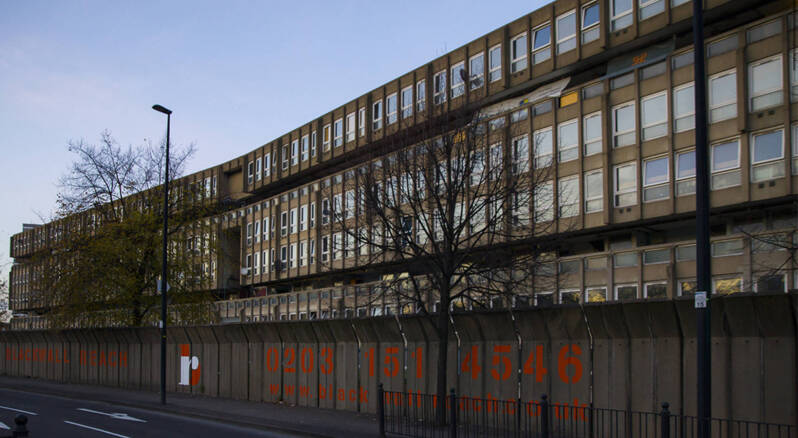




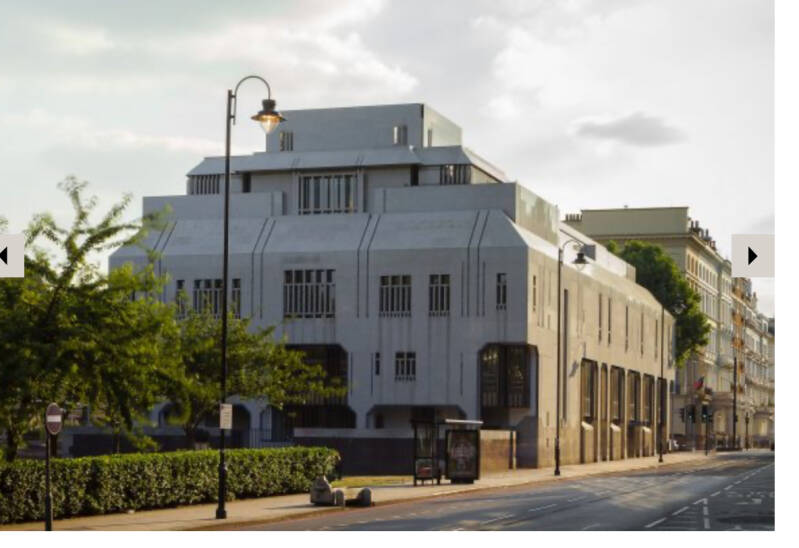




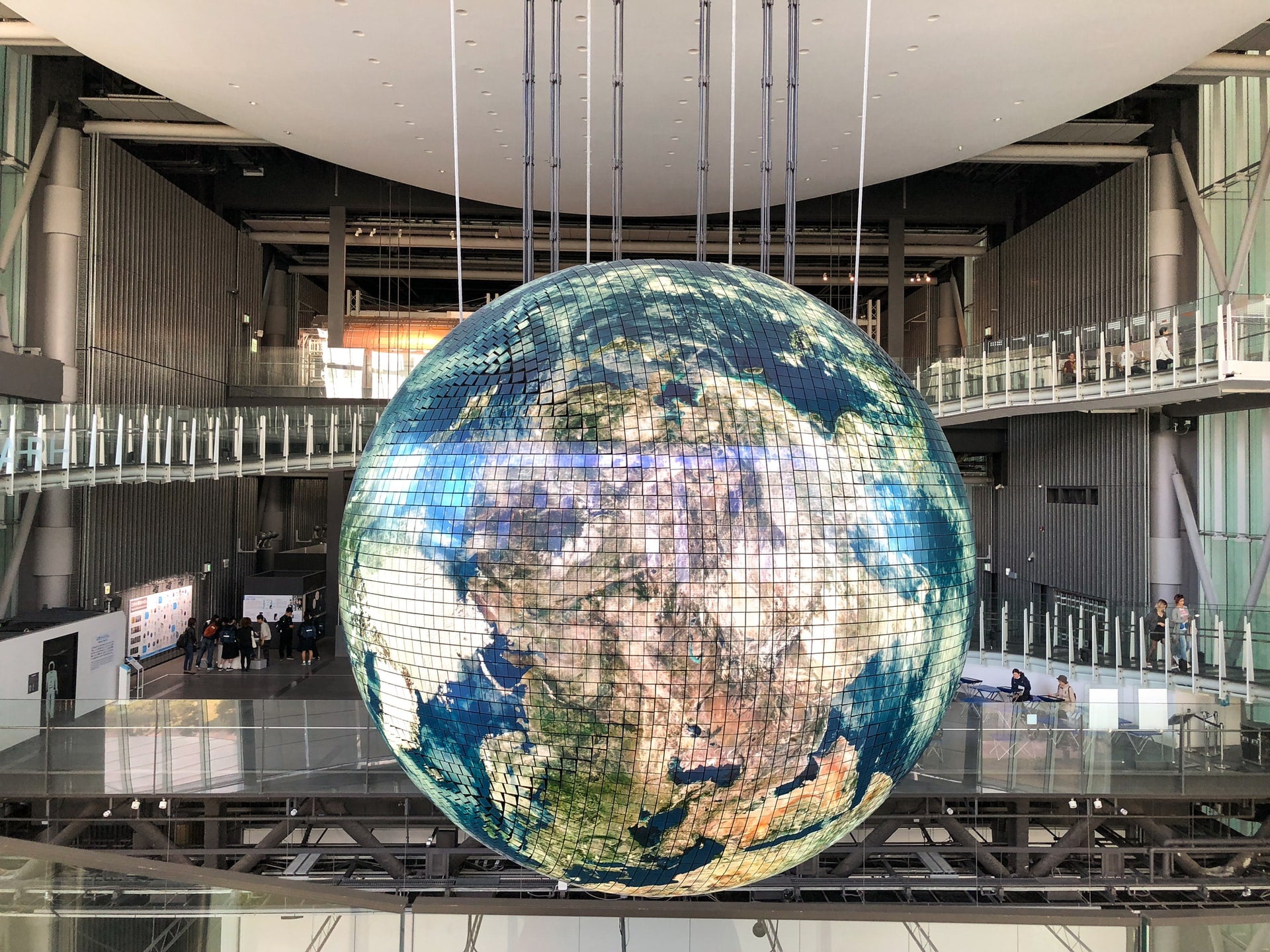

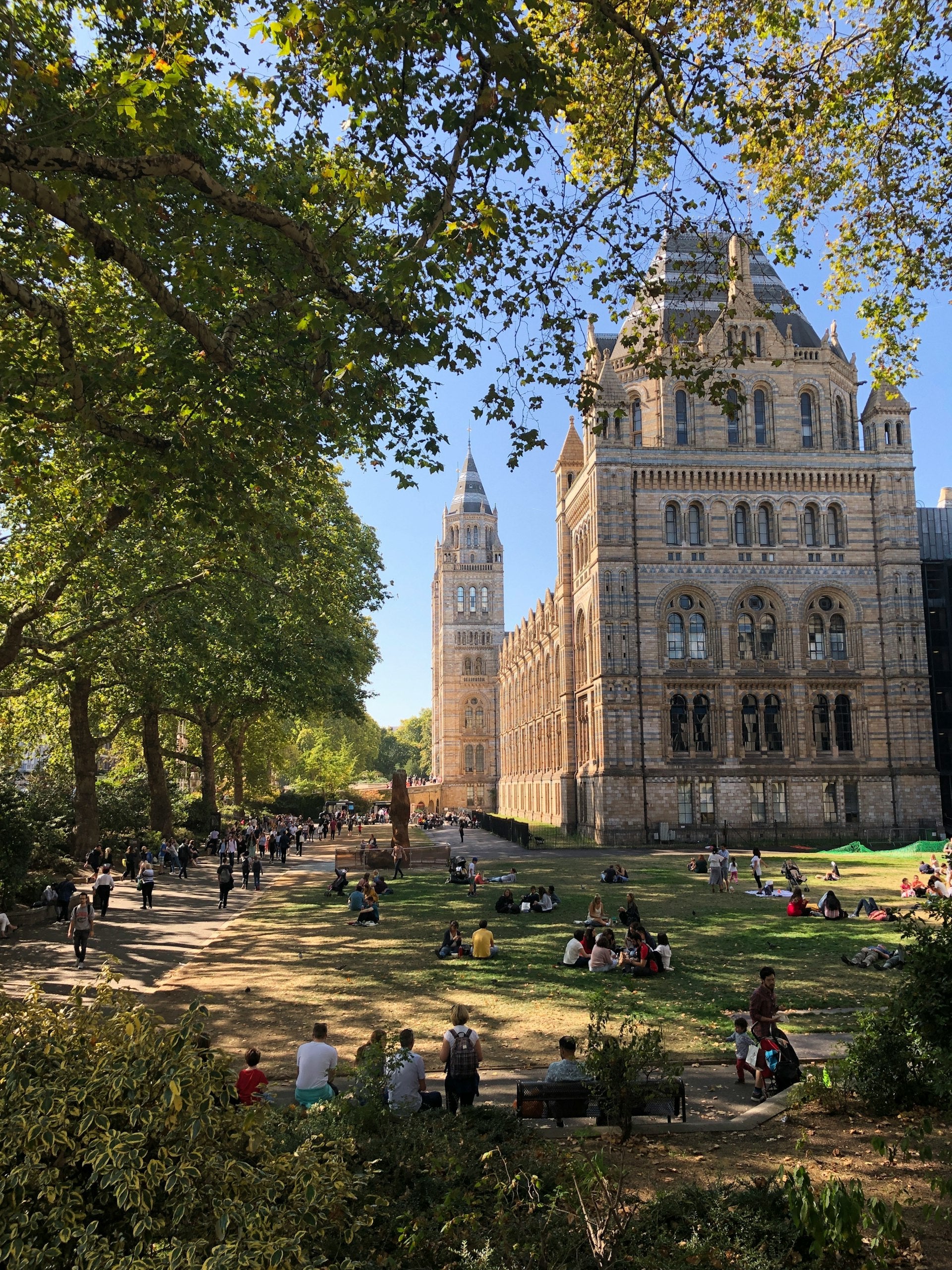



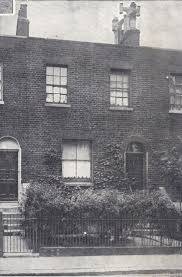

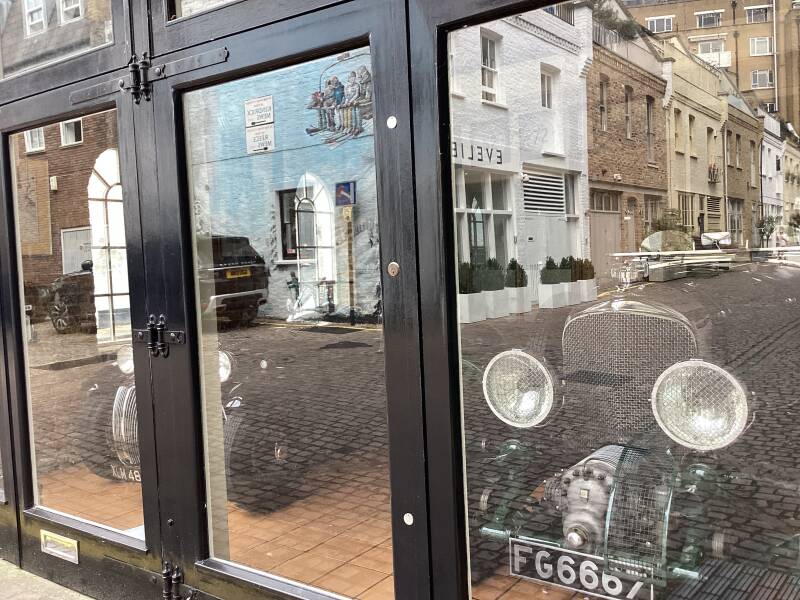

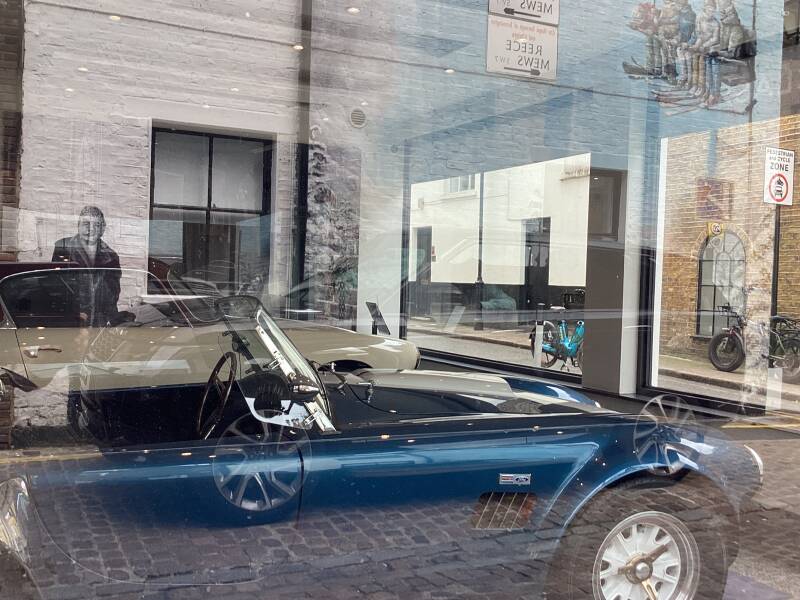












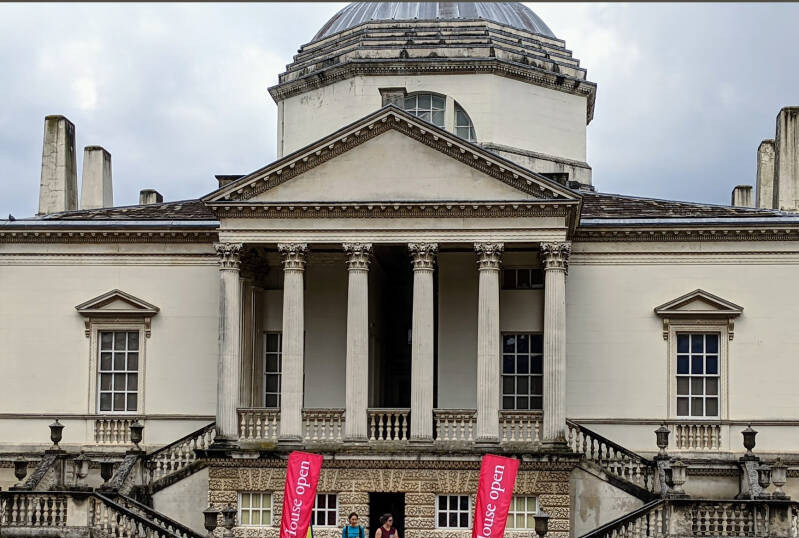
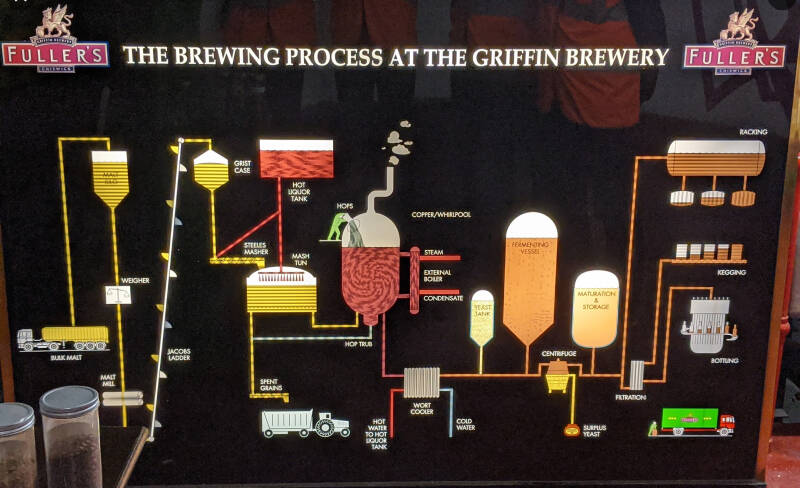
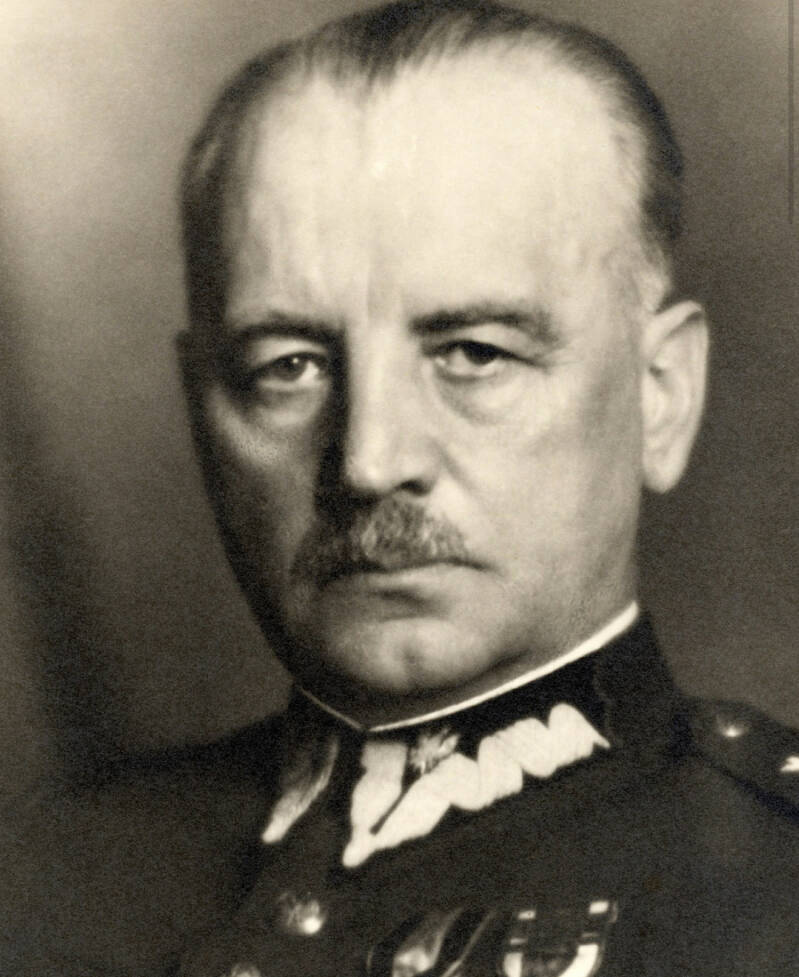


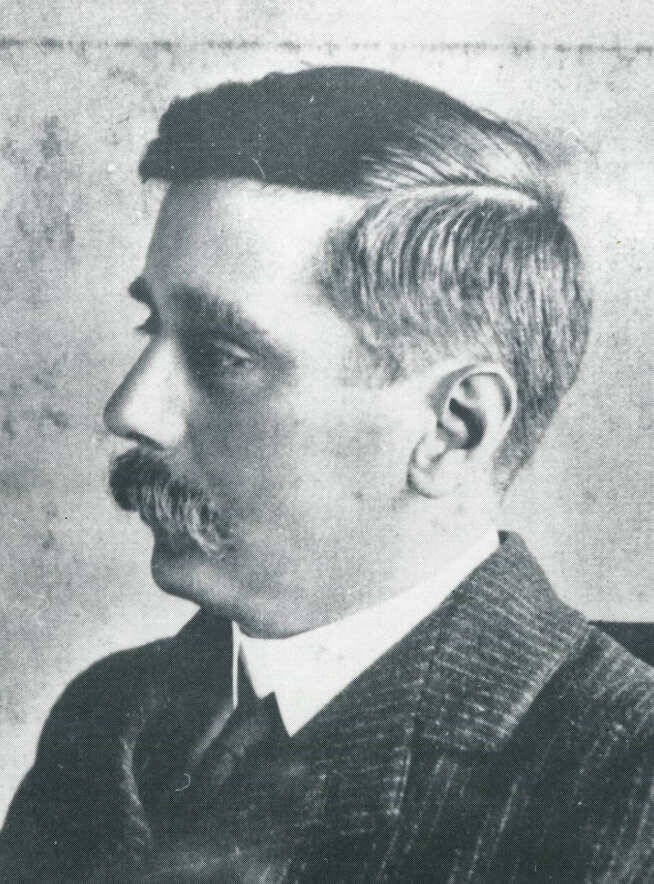
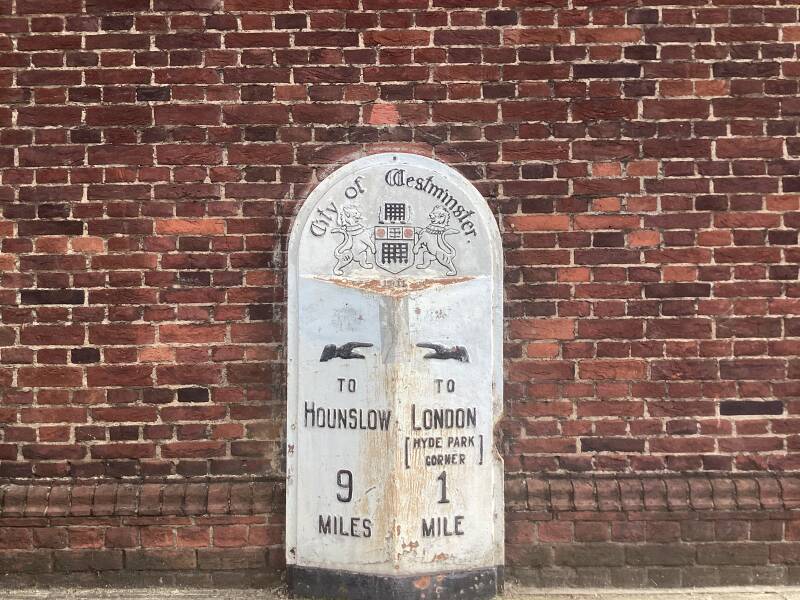


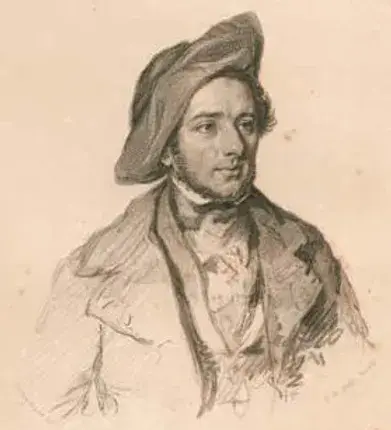
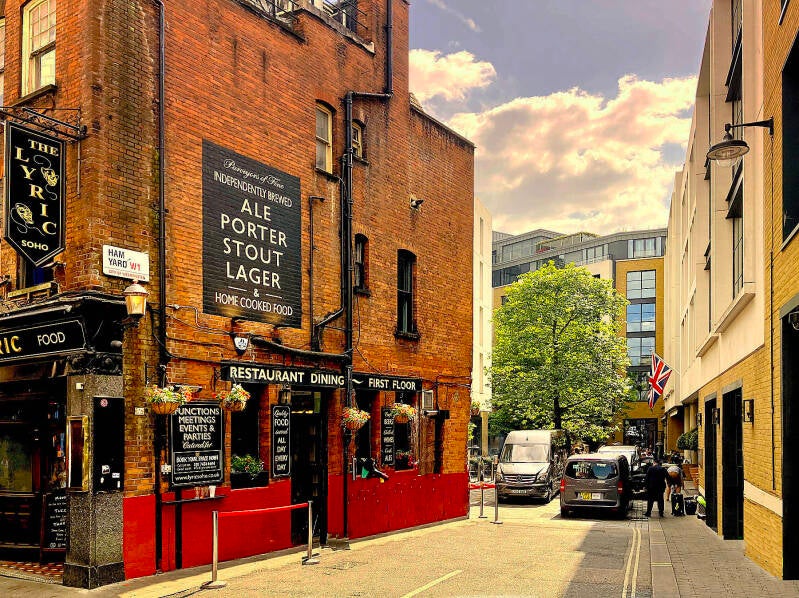
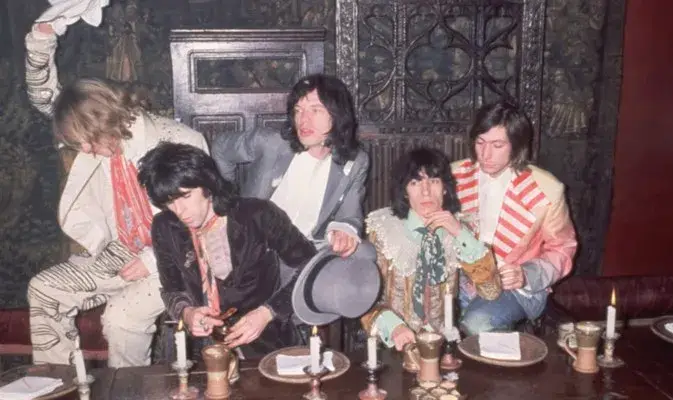



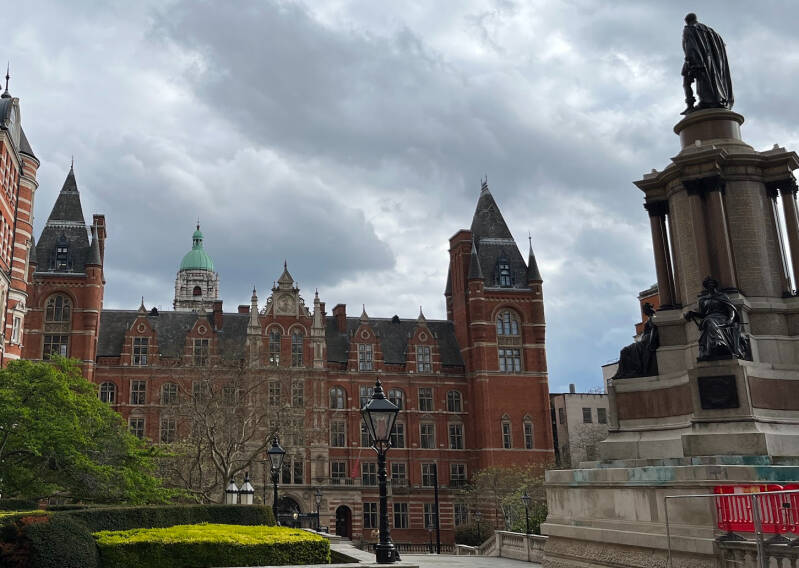

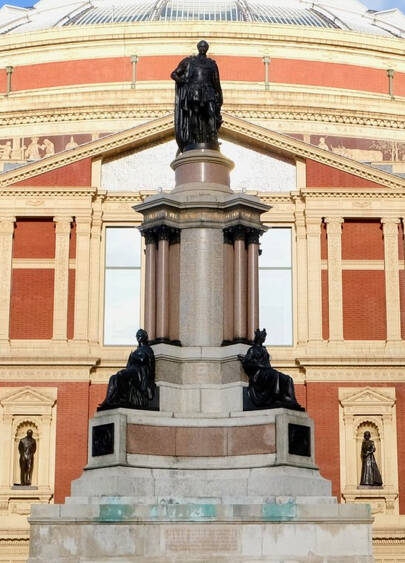


Create Your Own Website With Webador